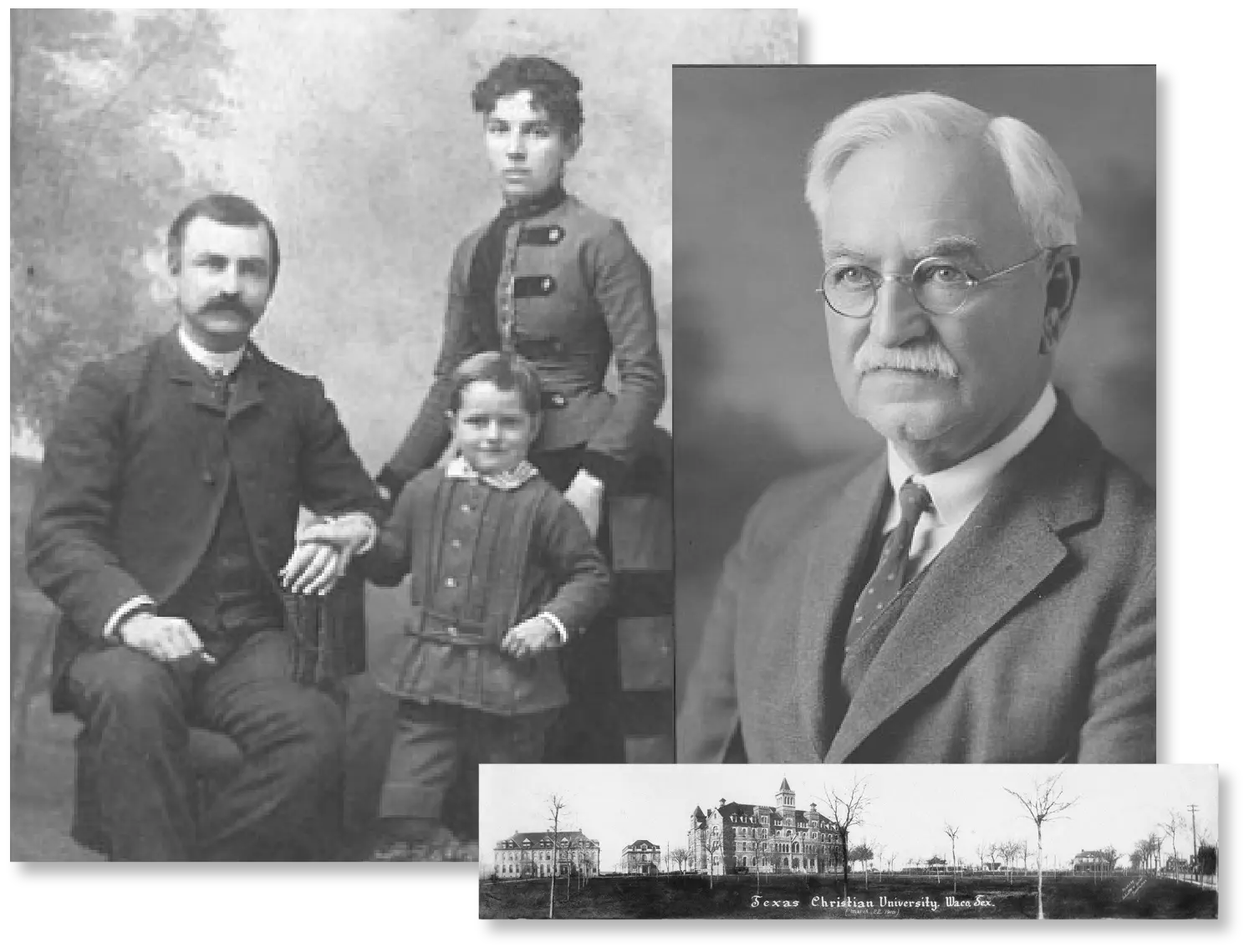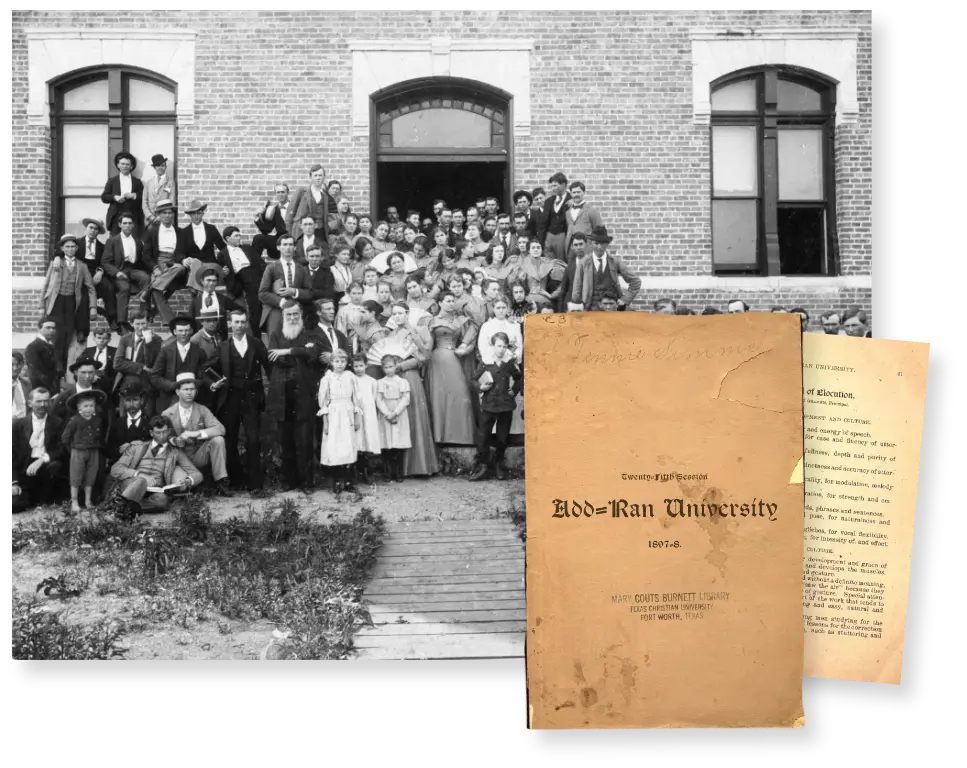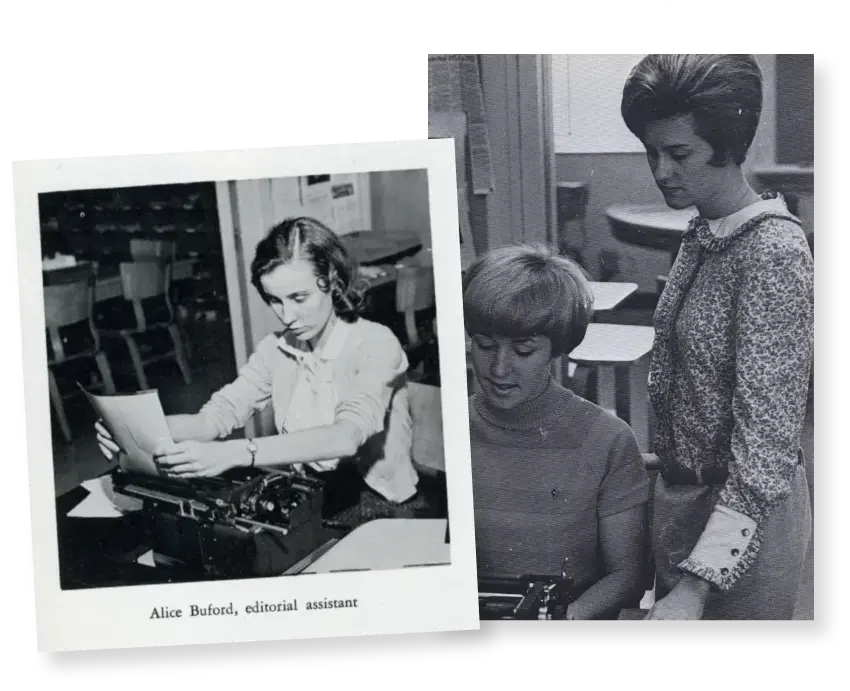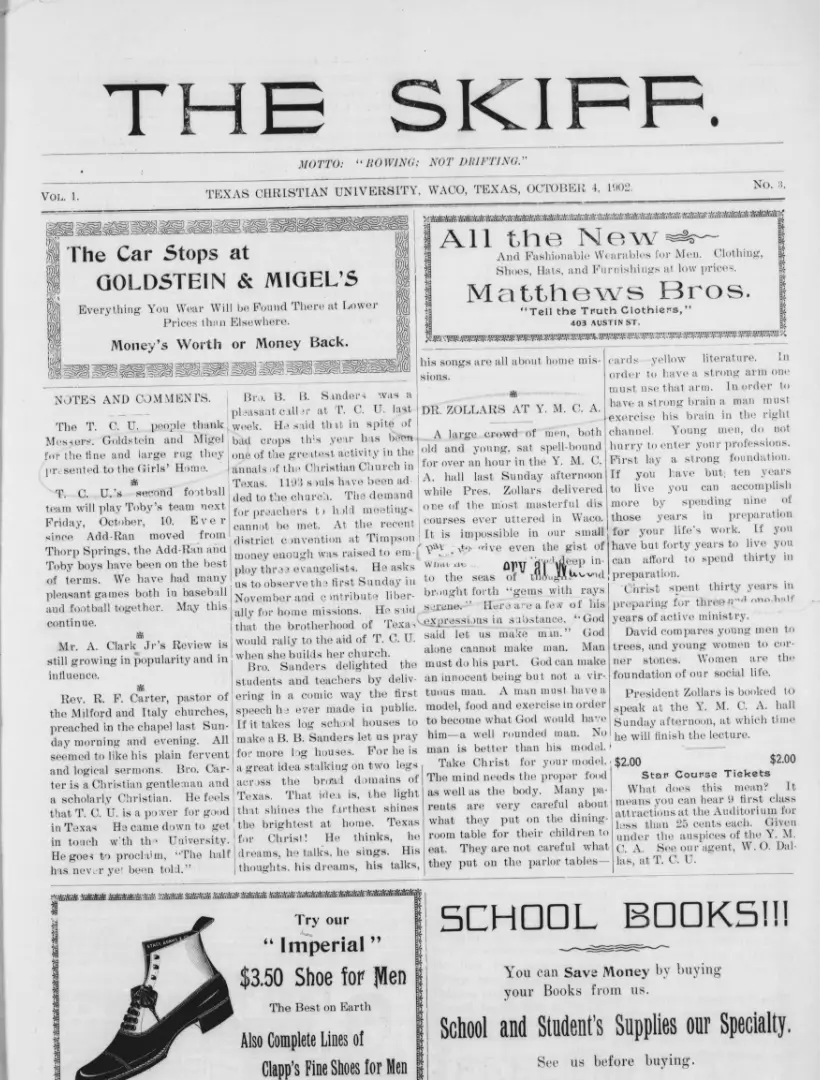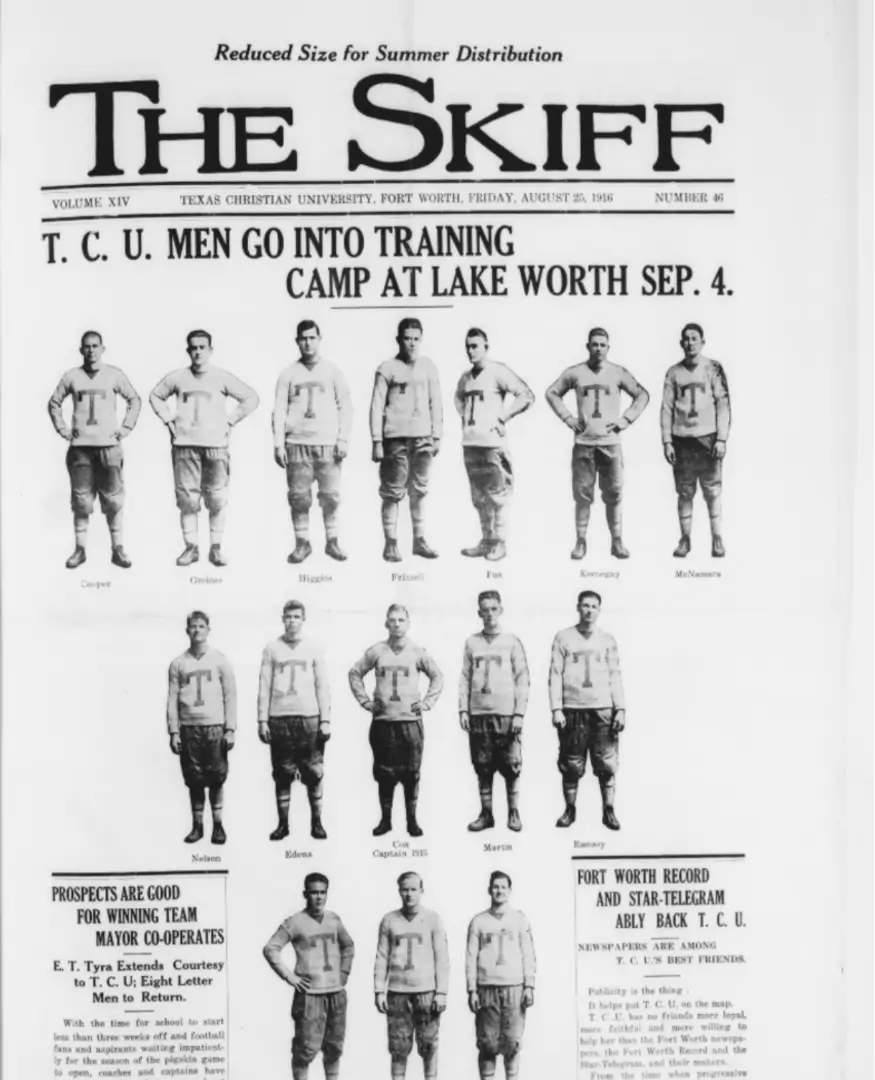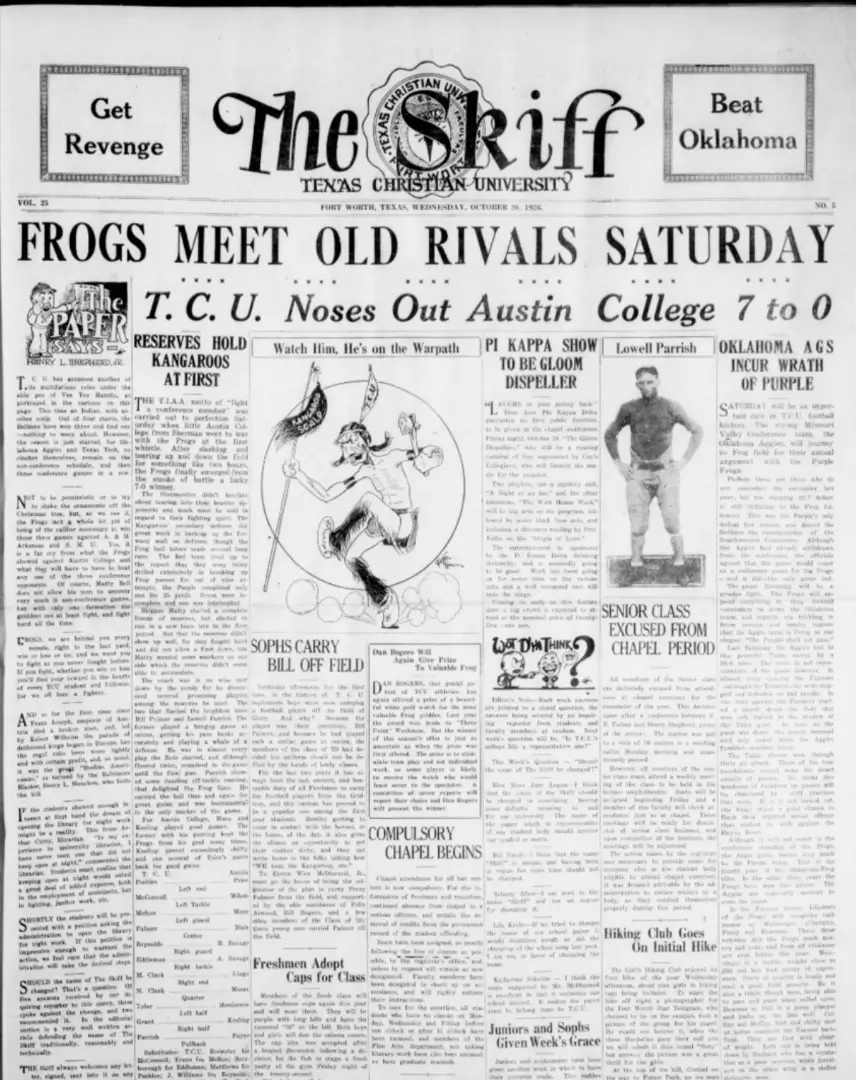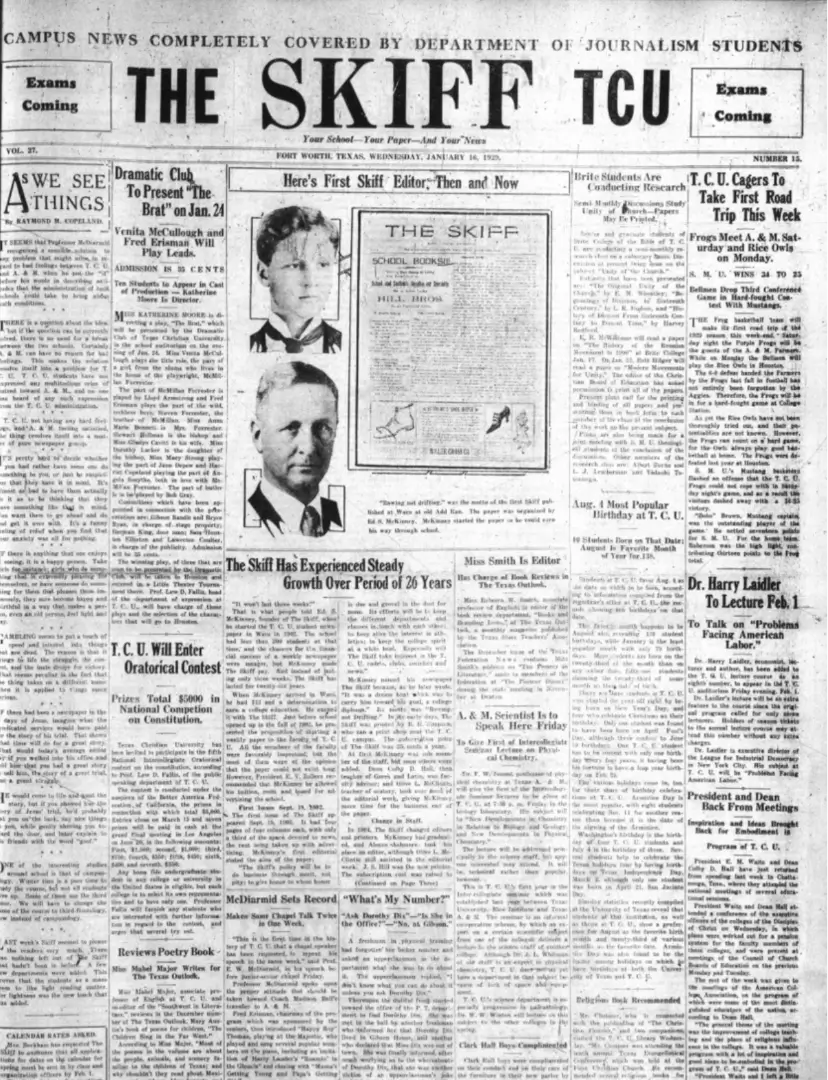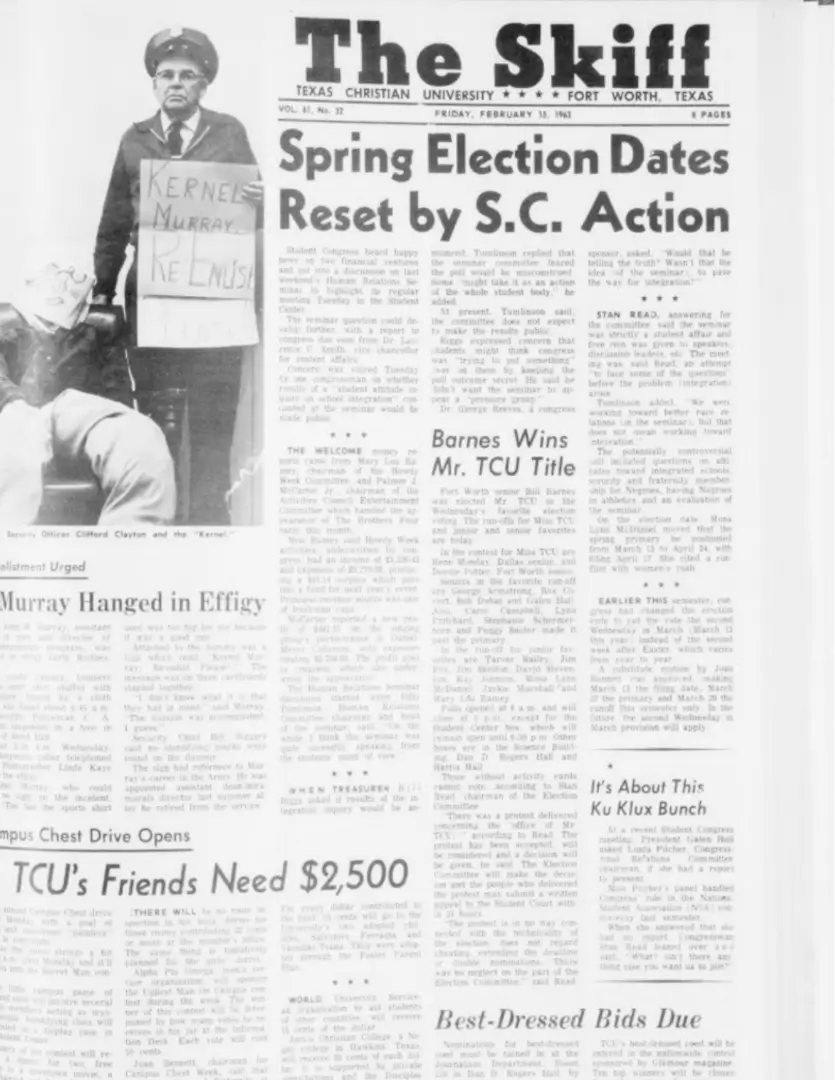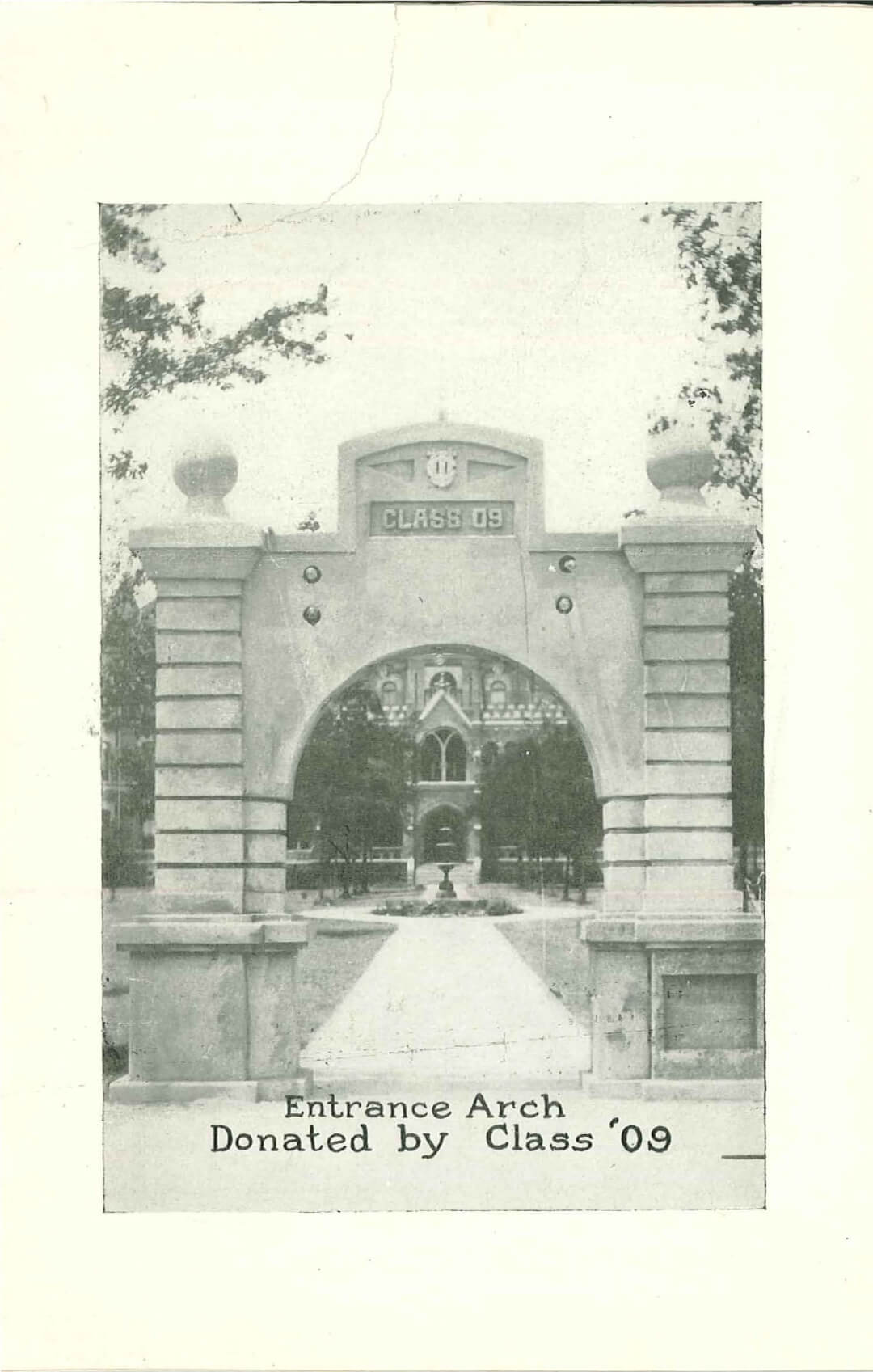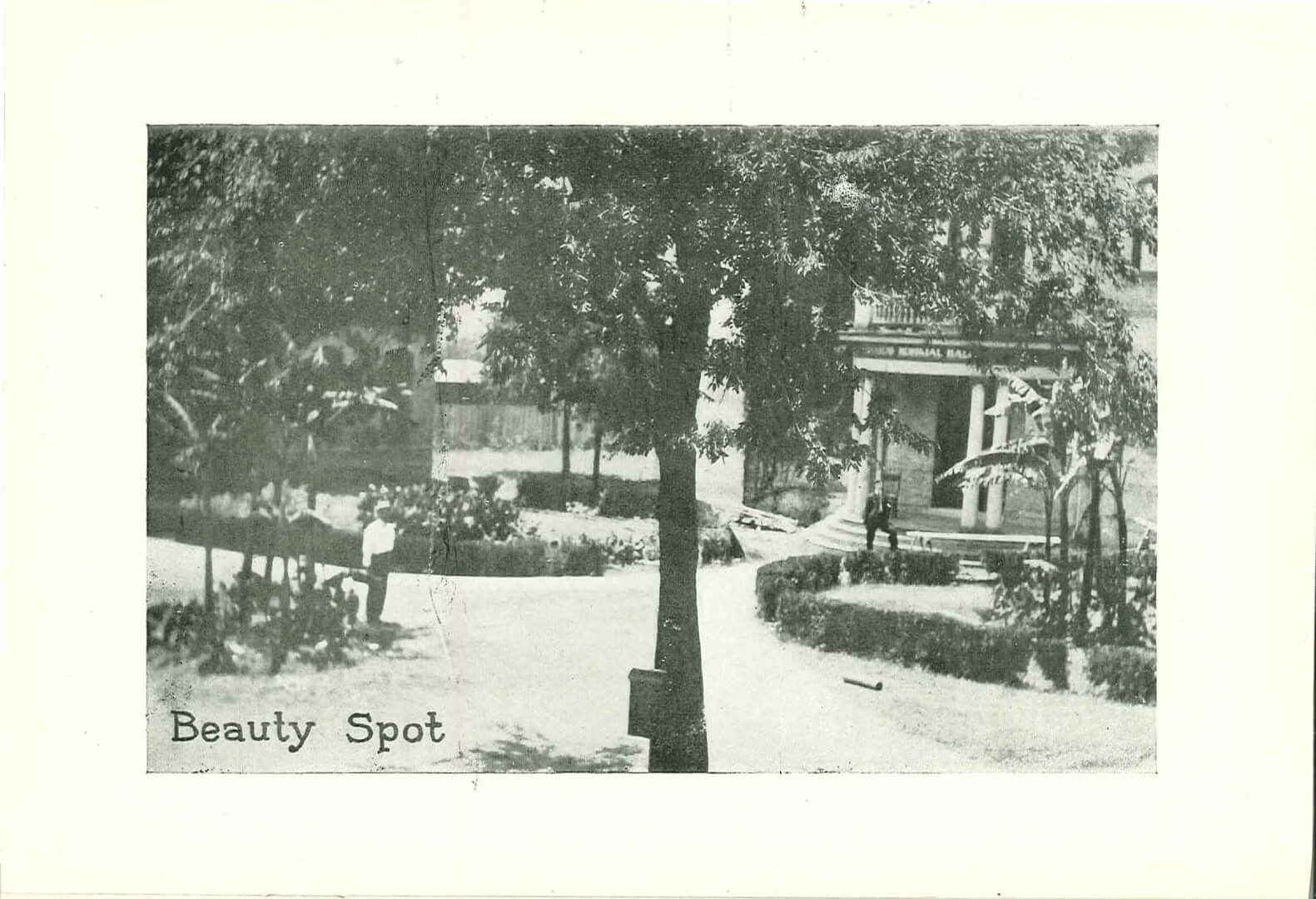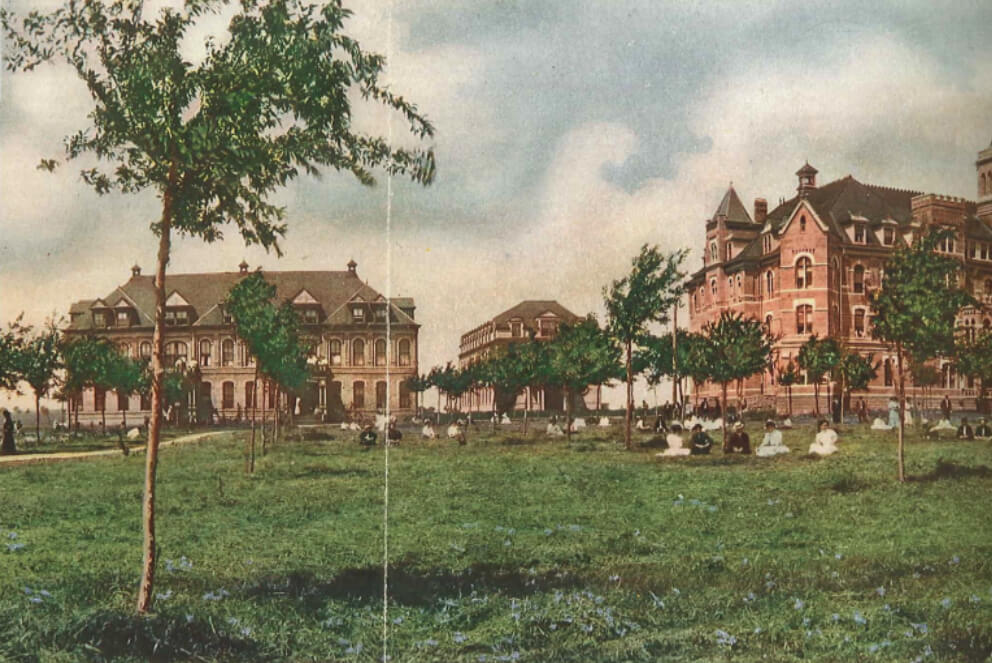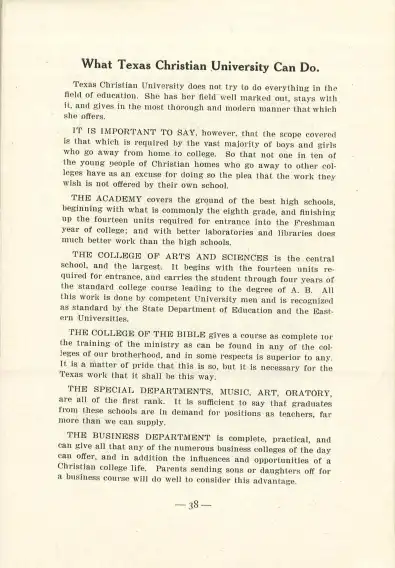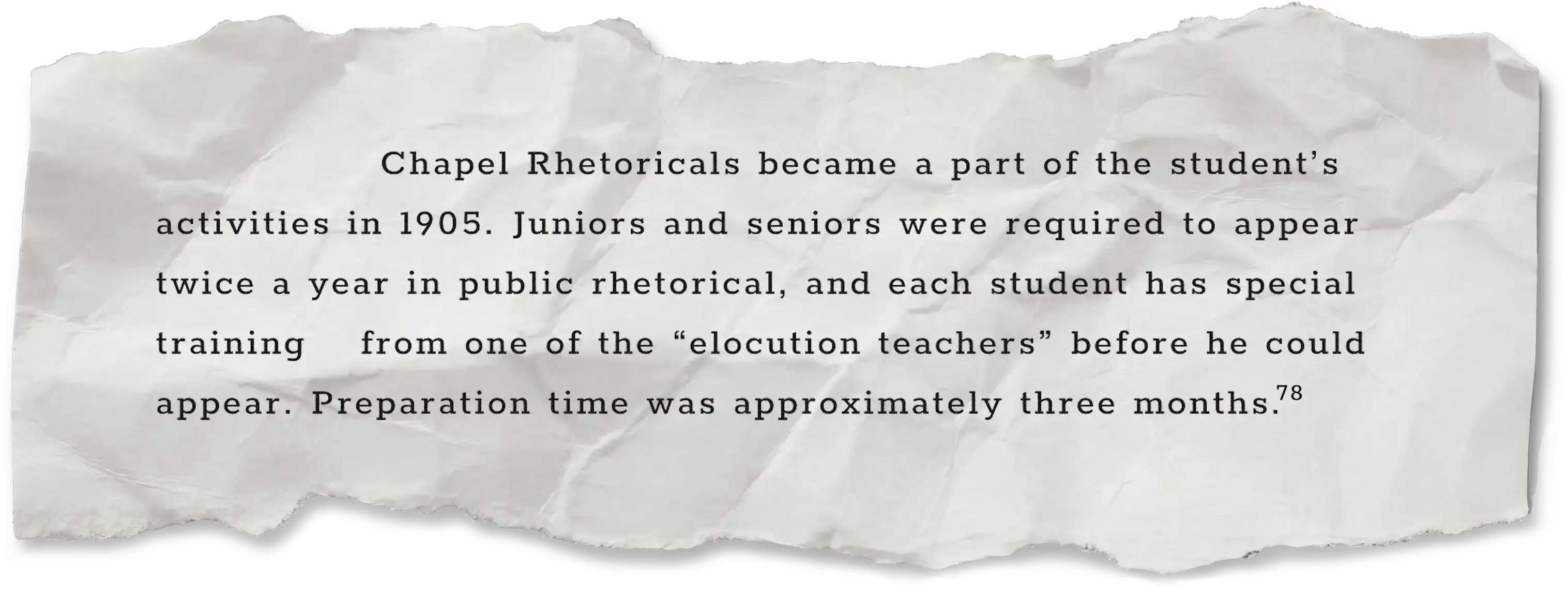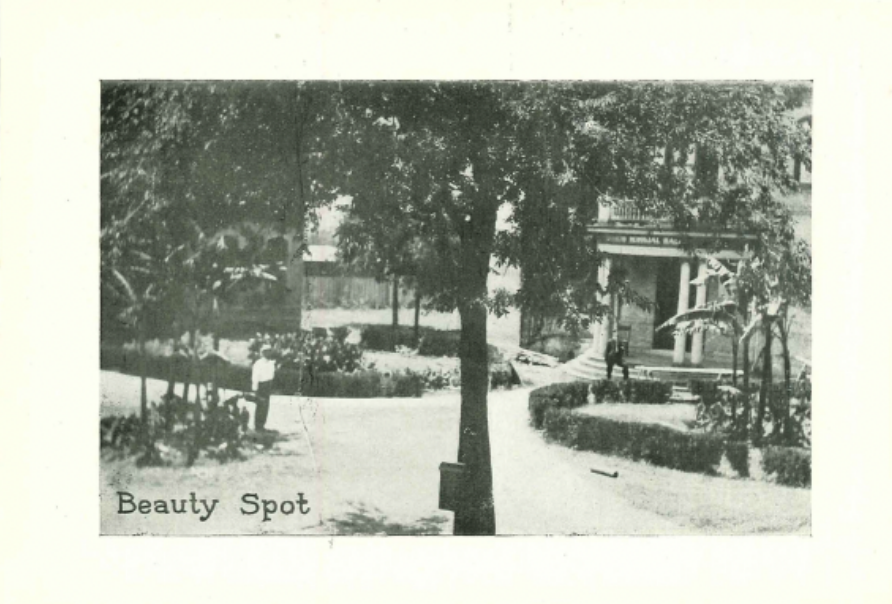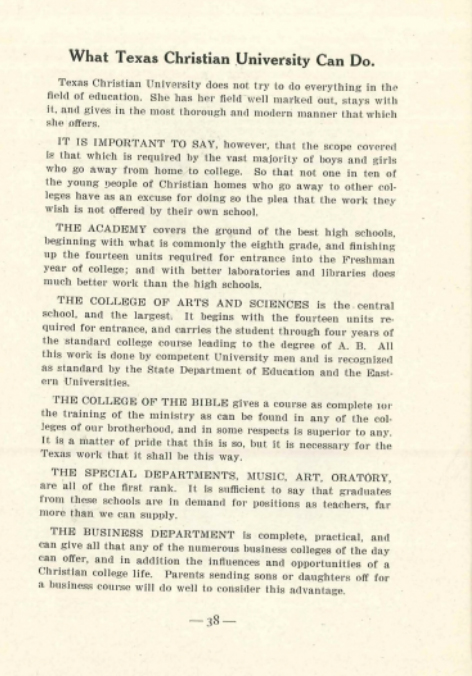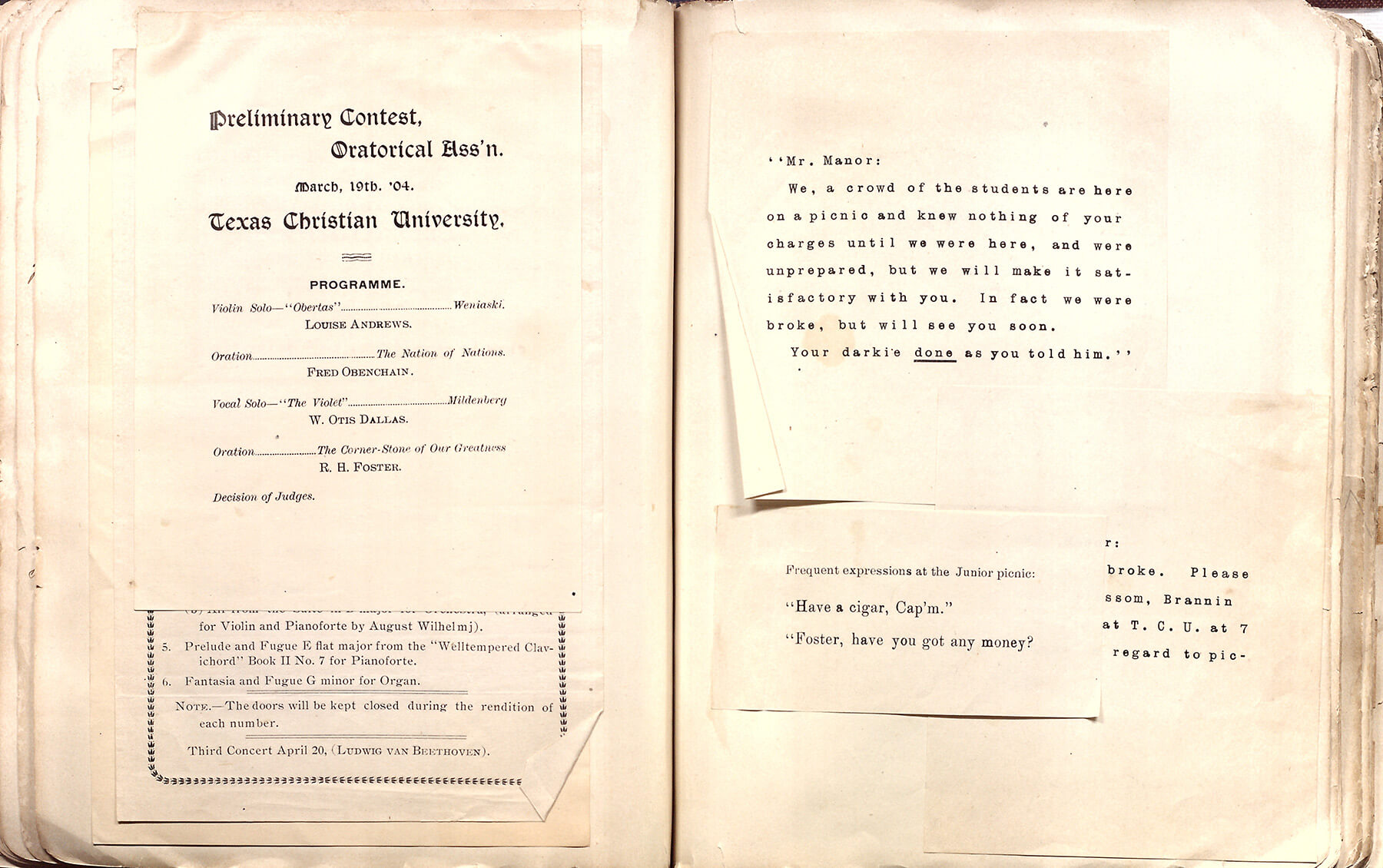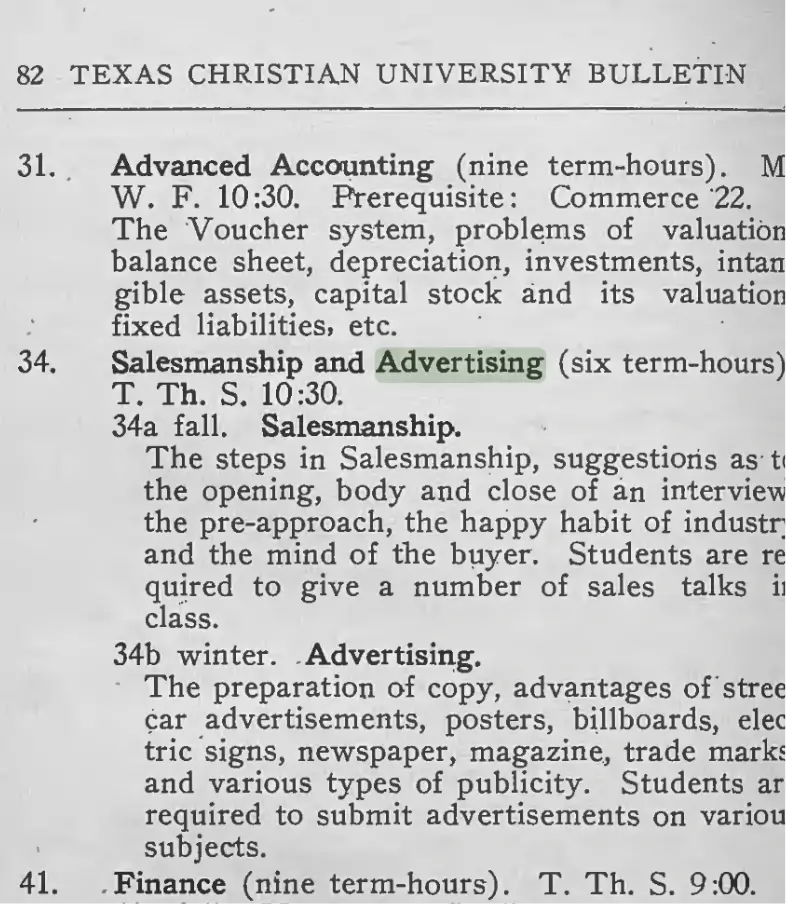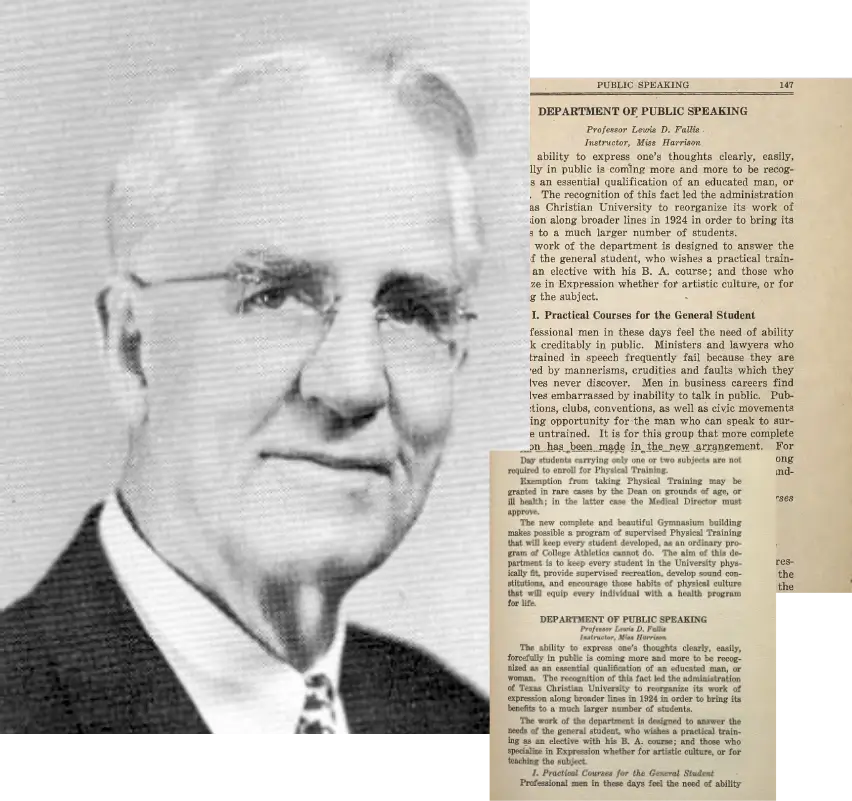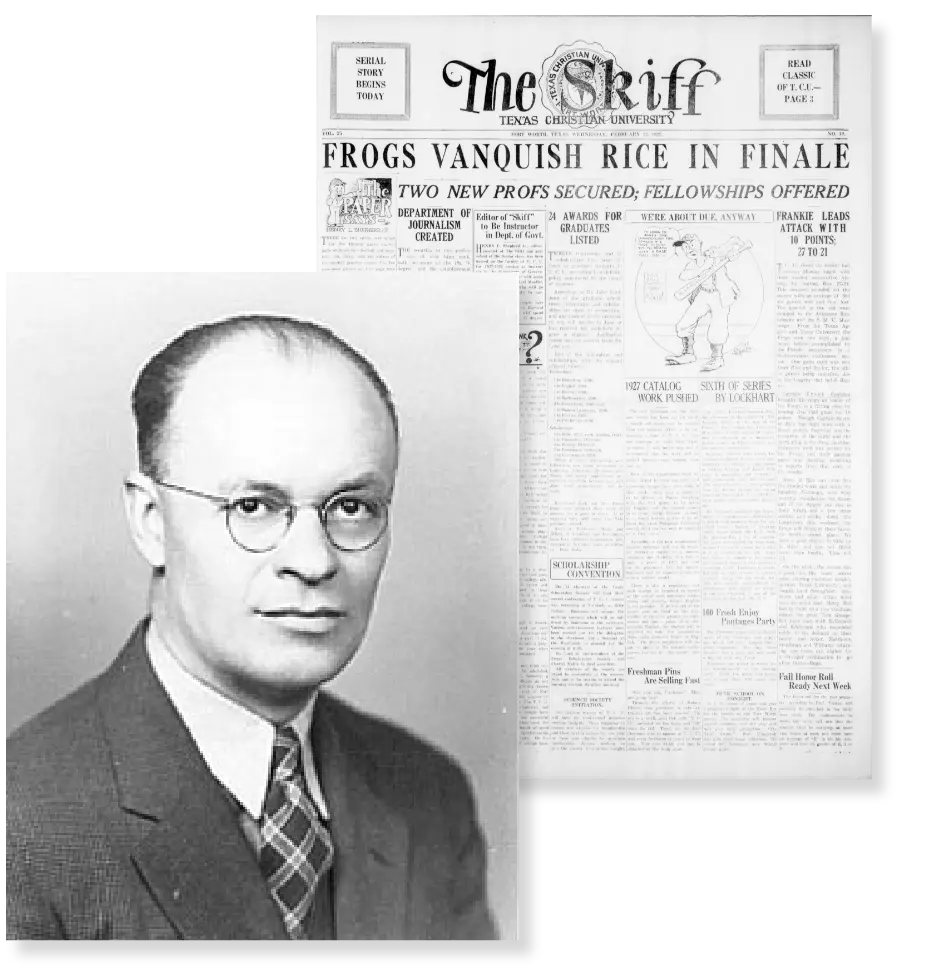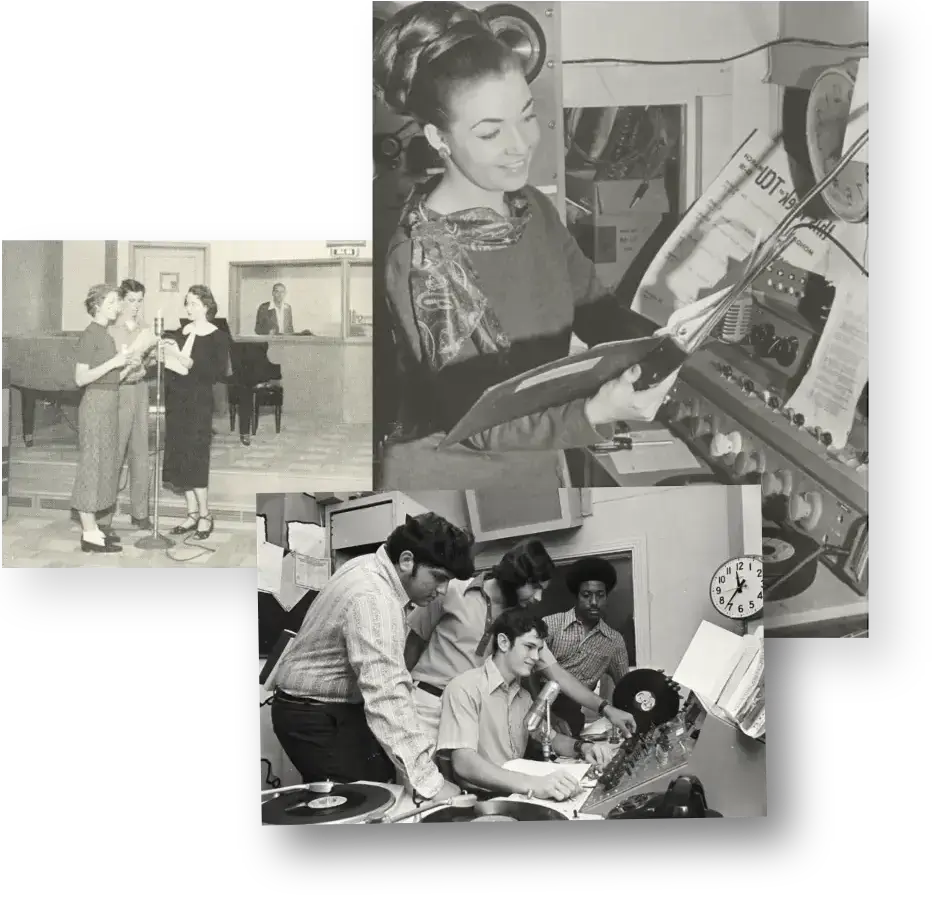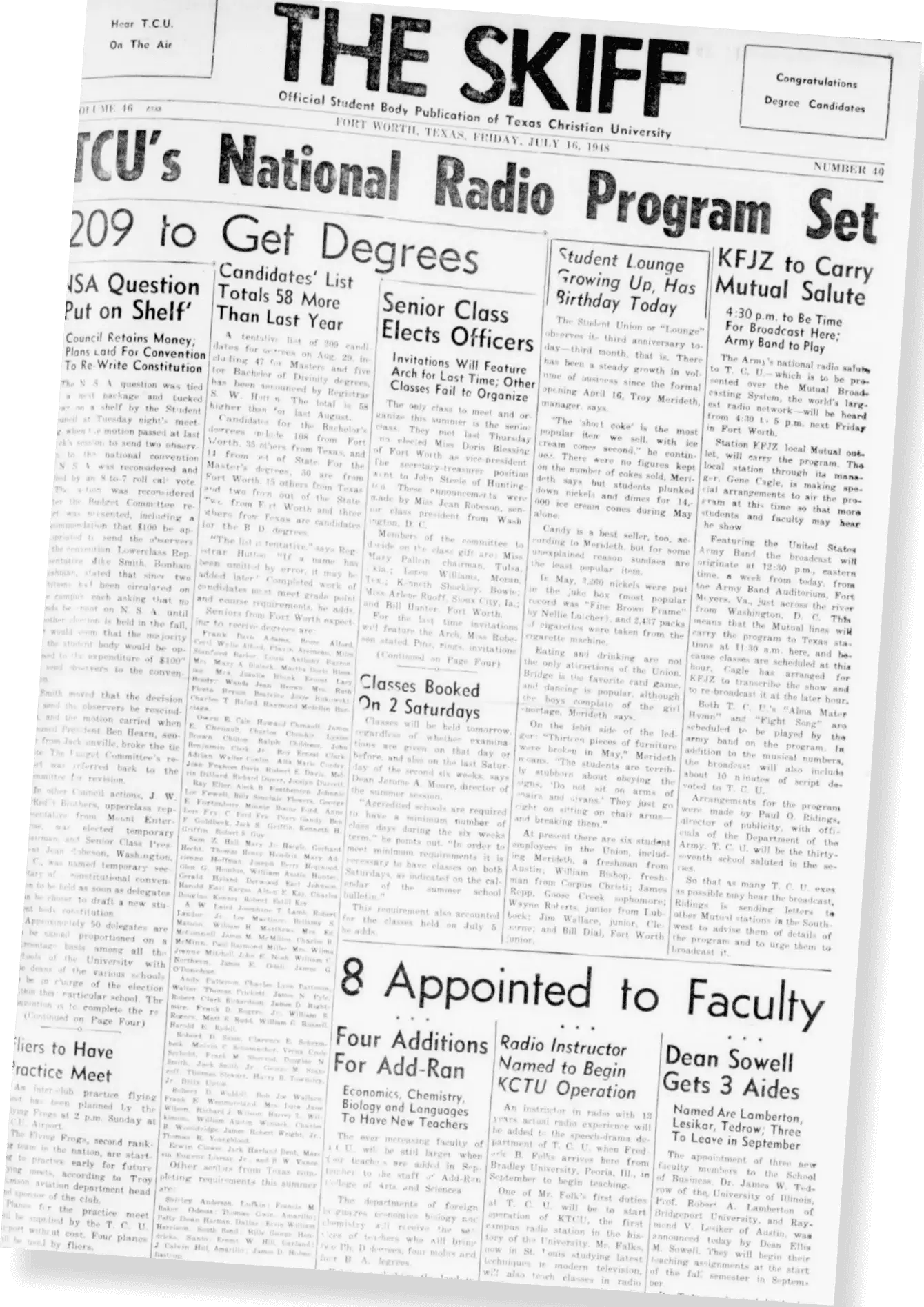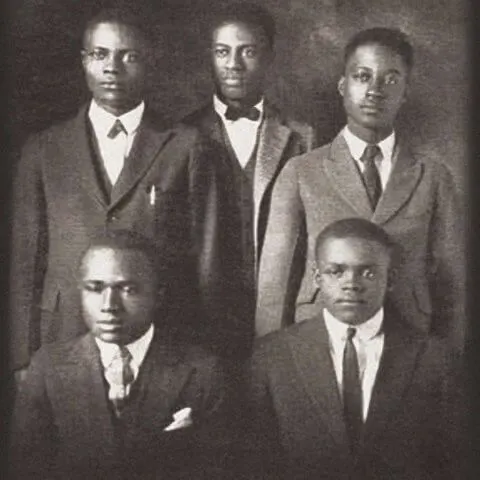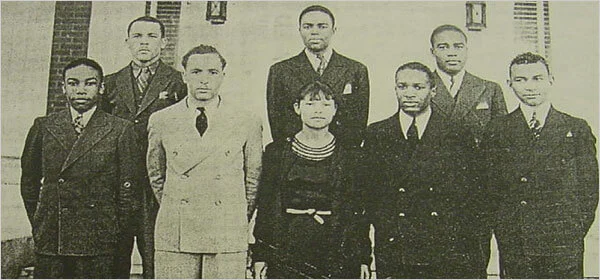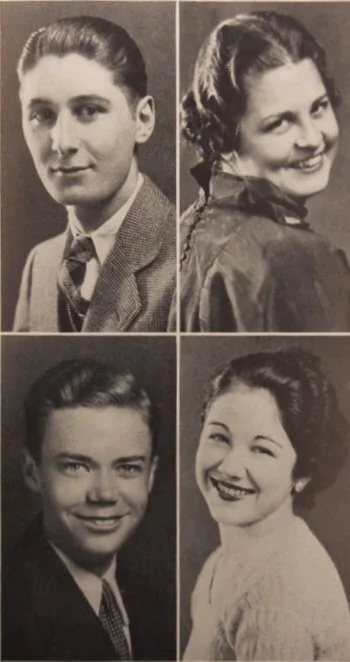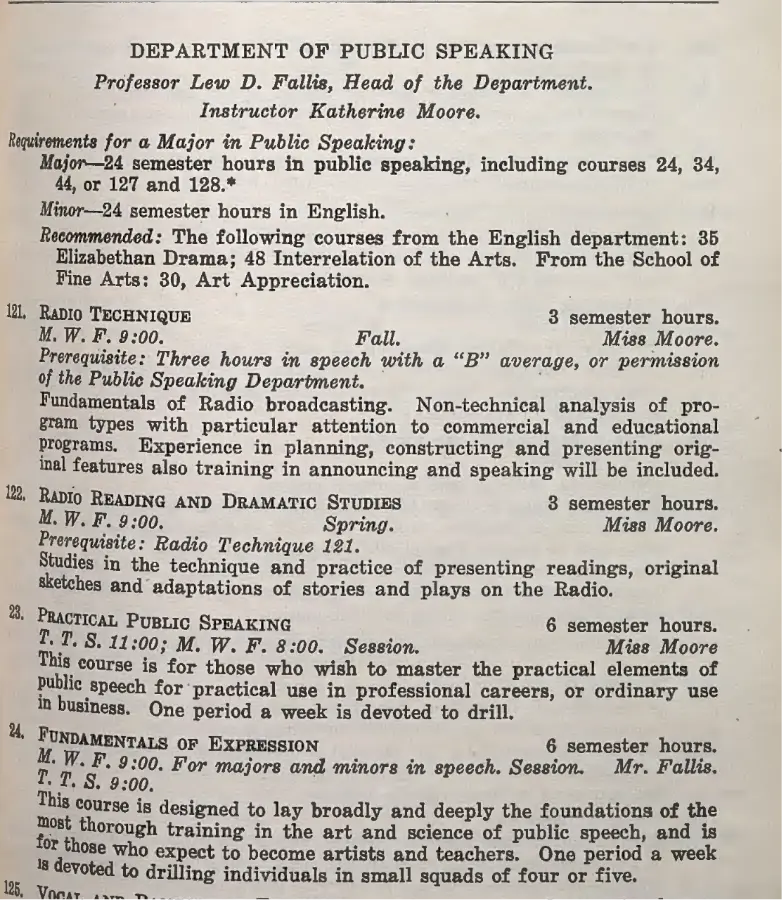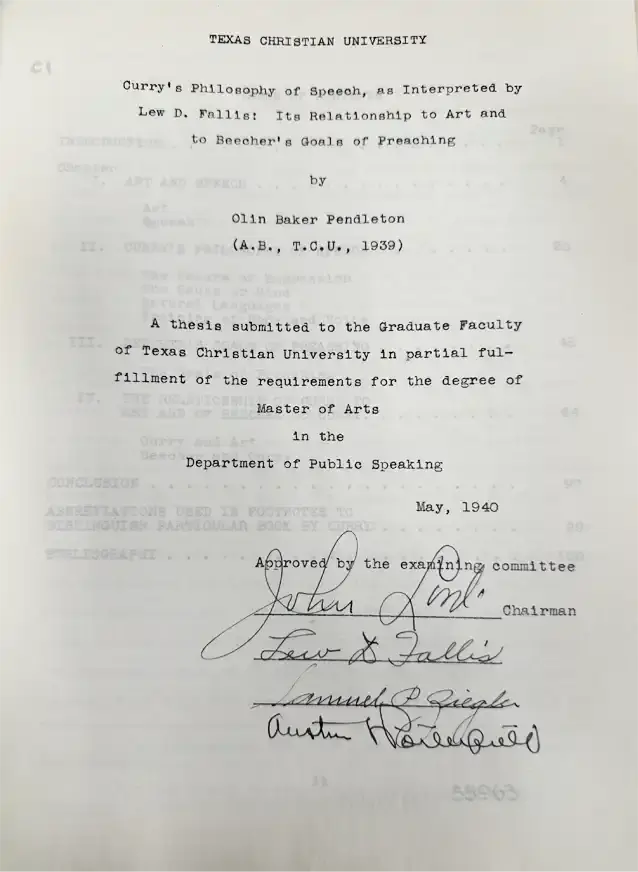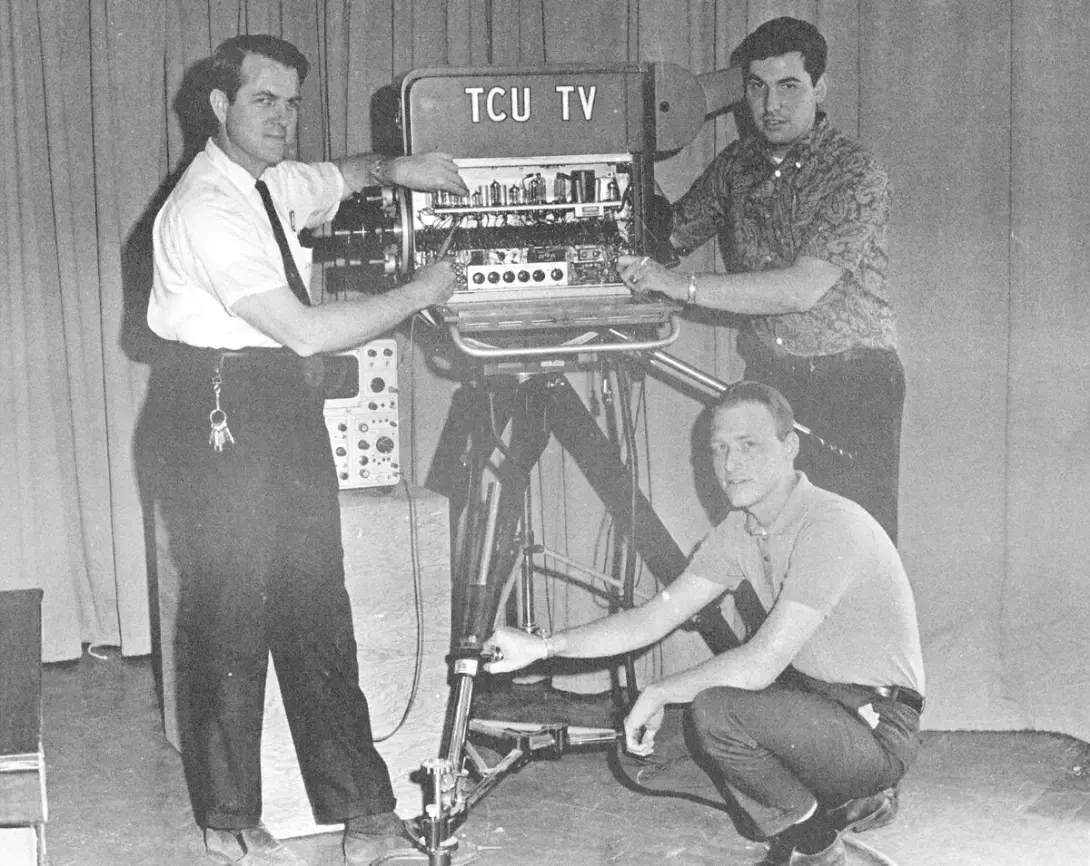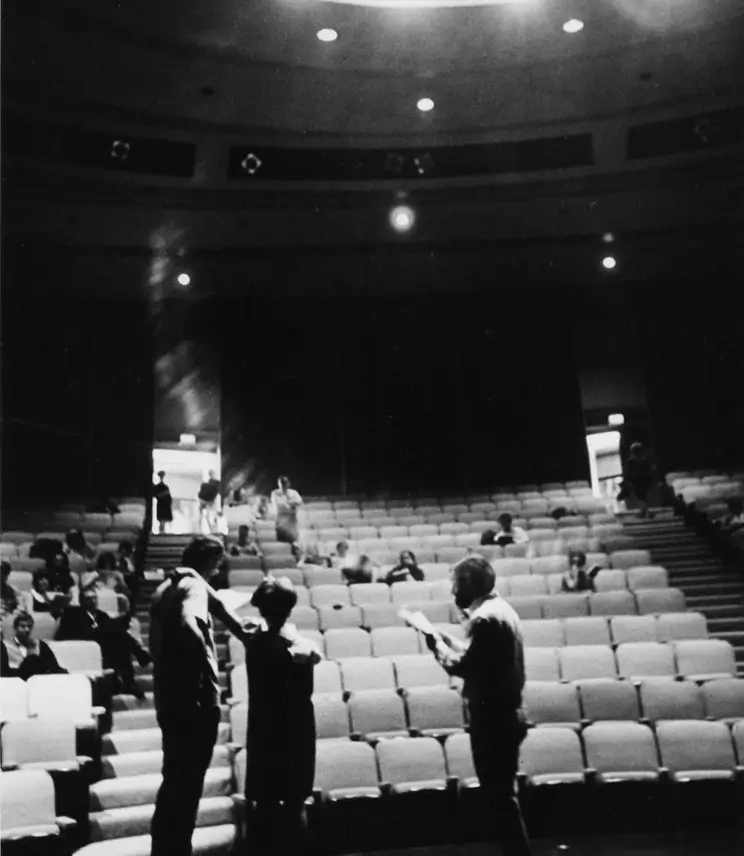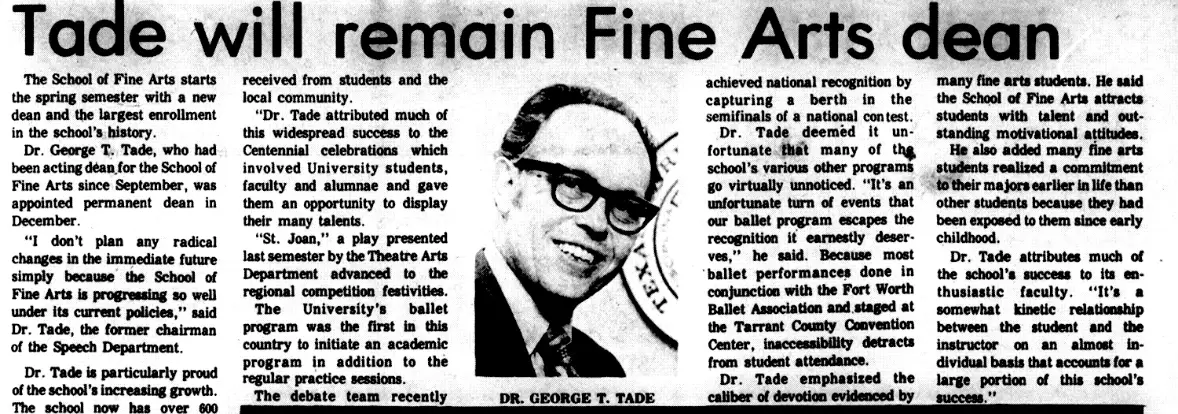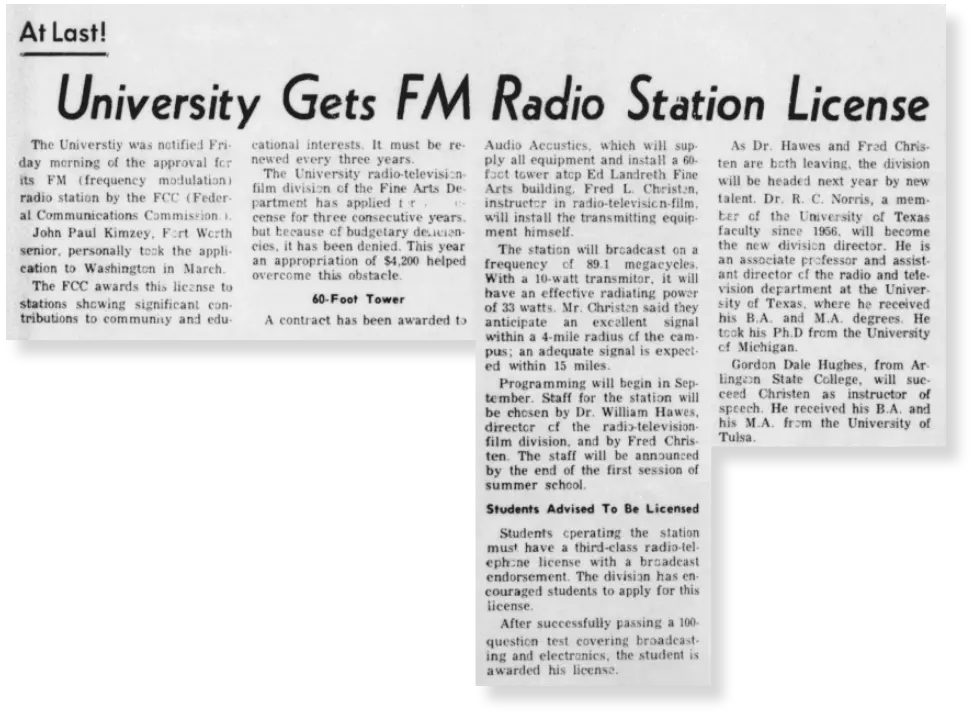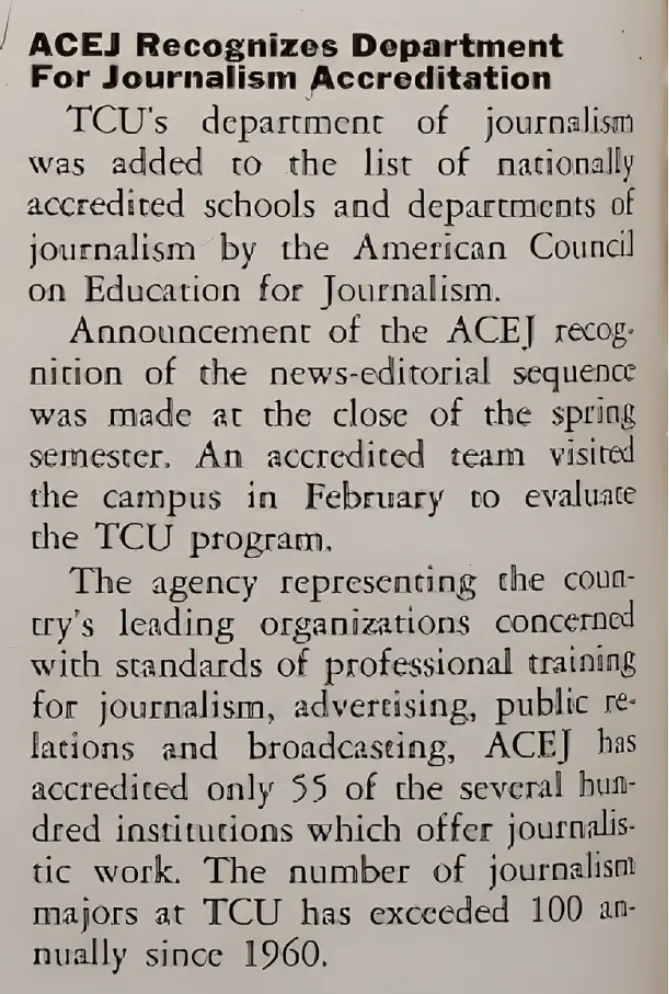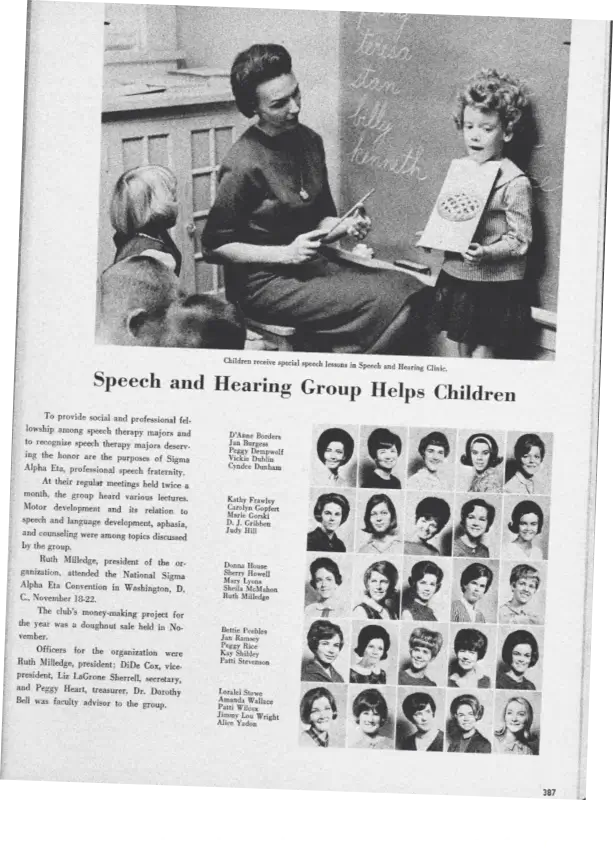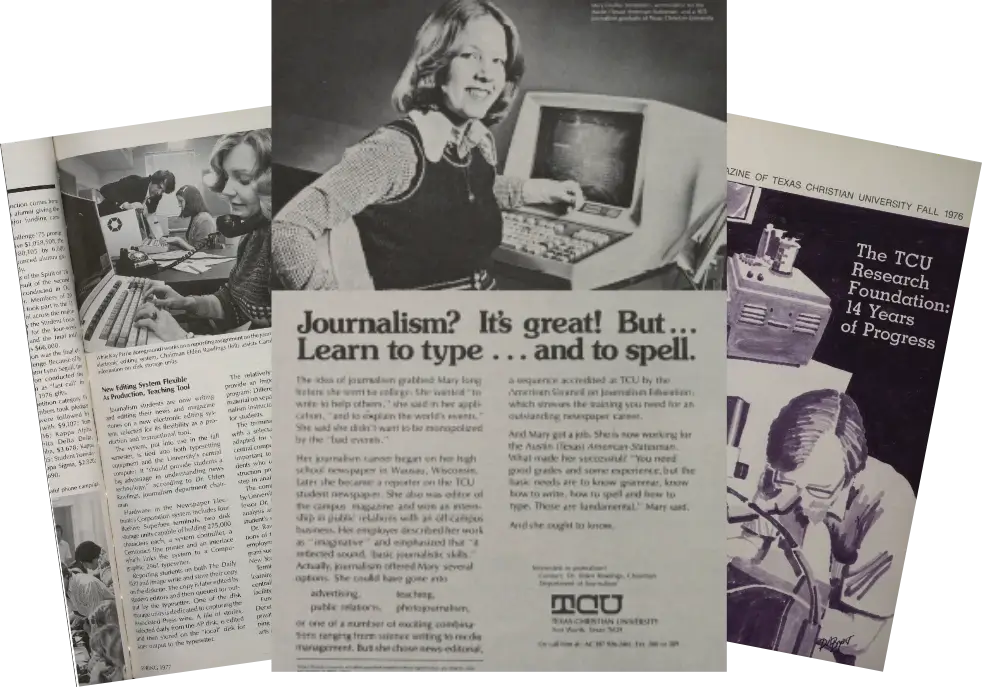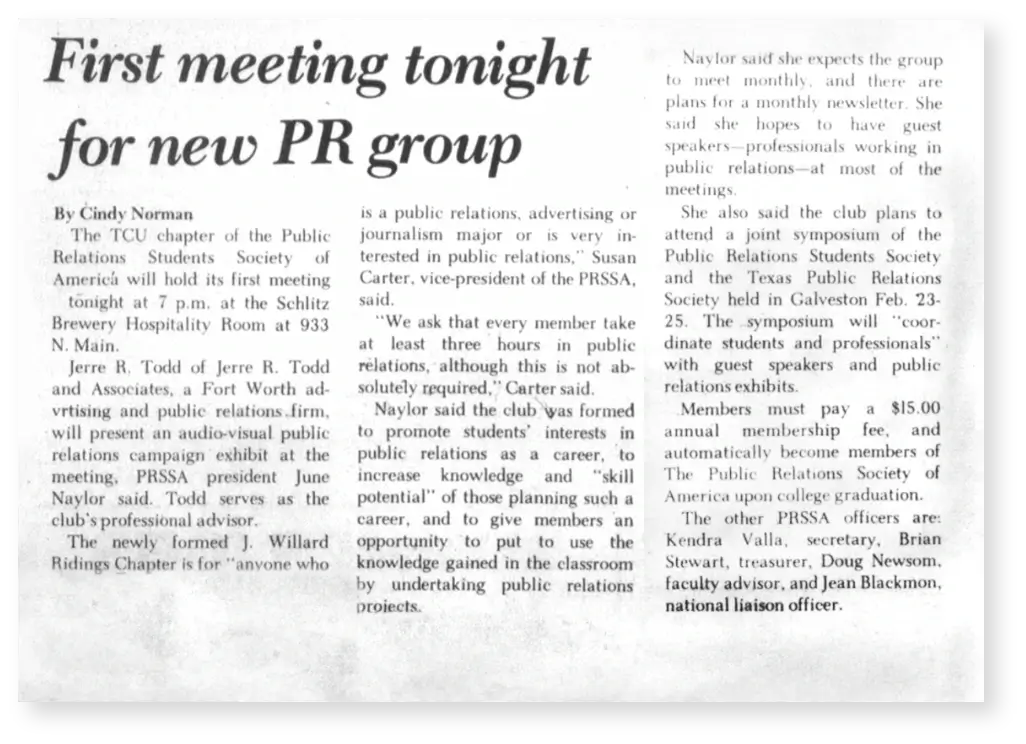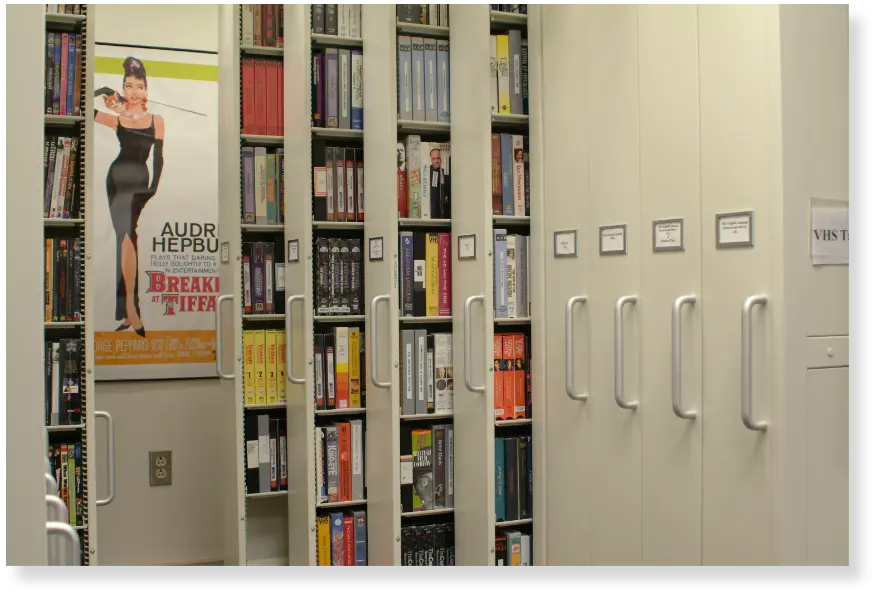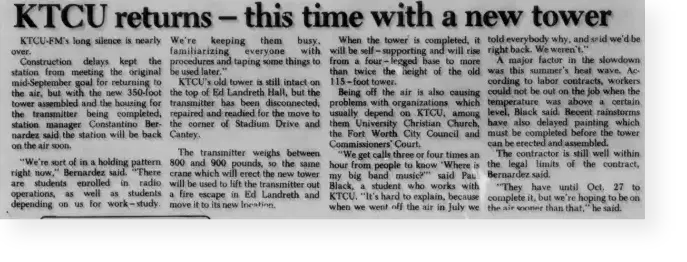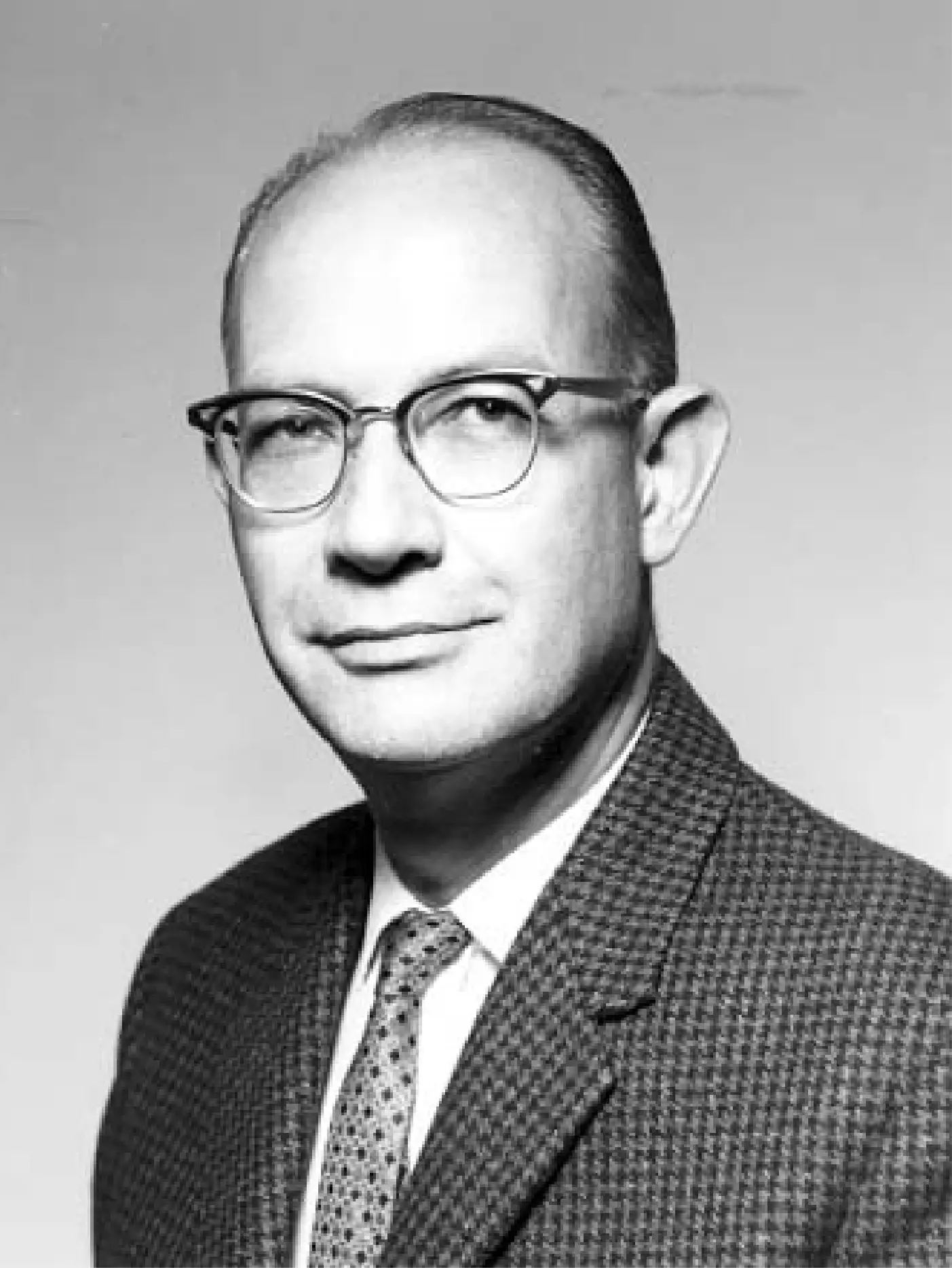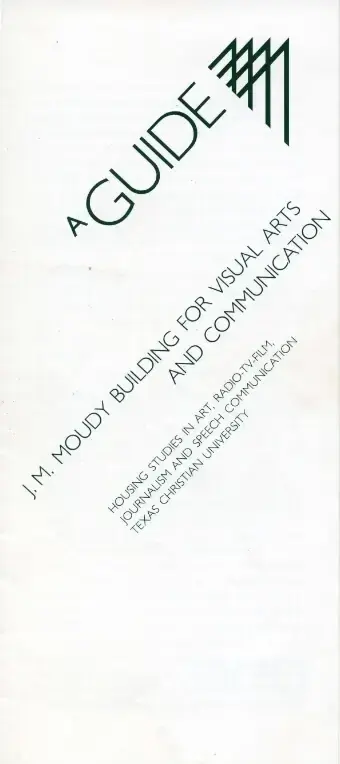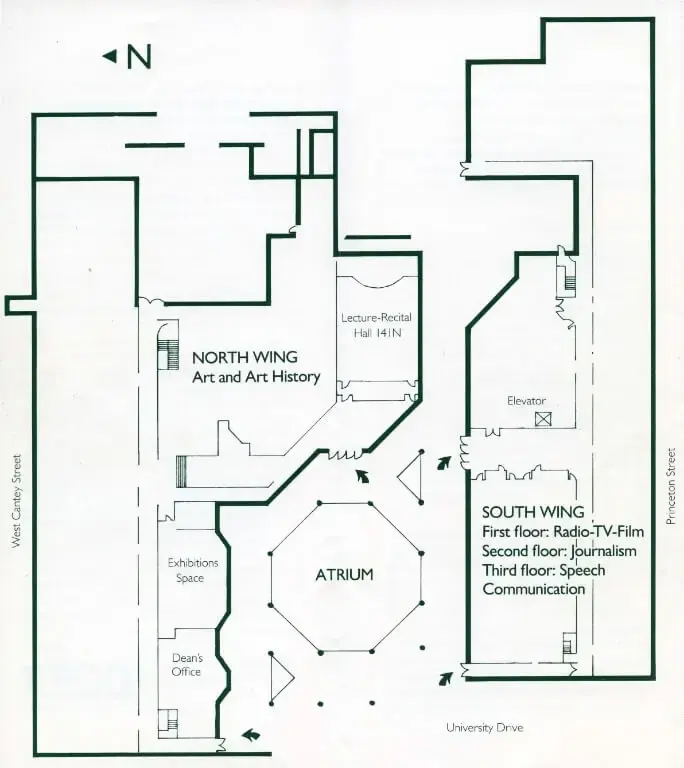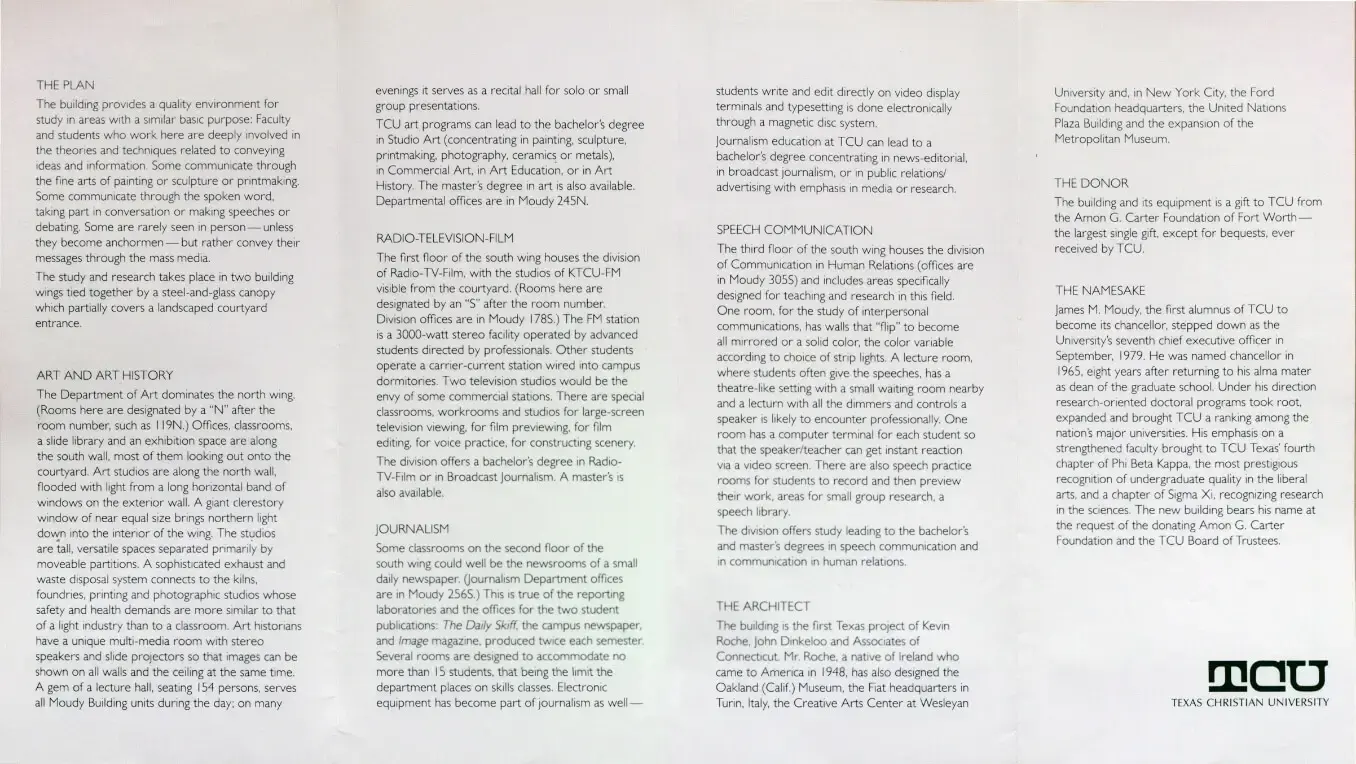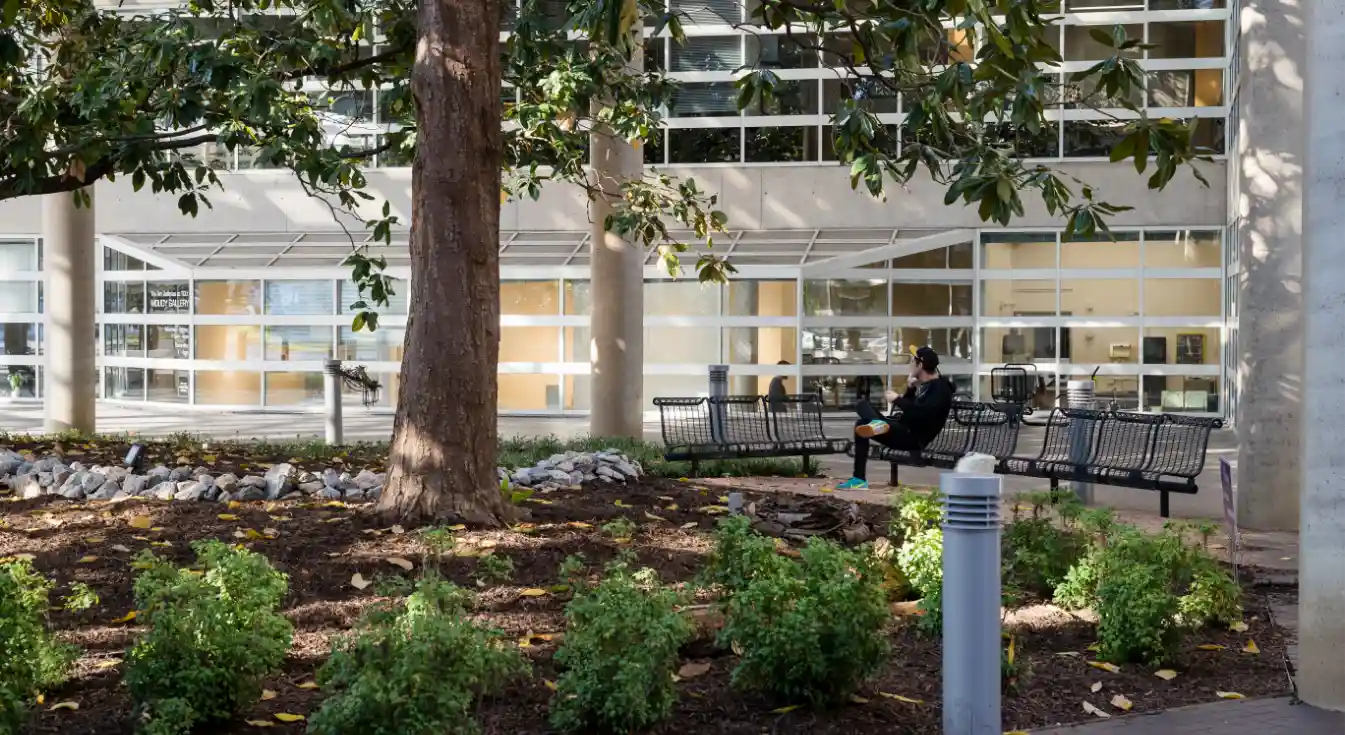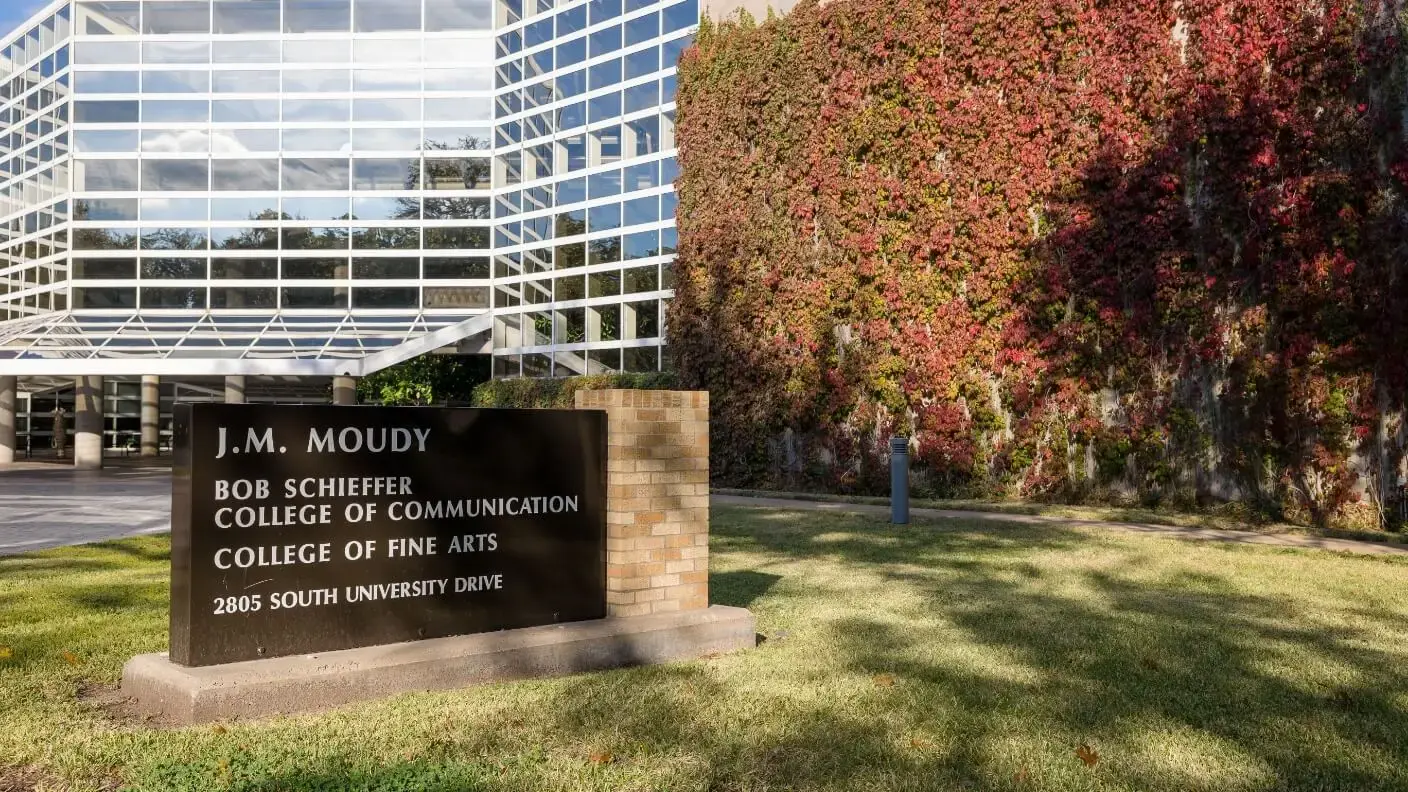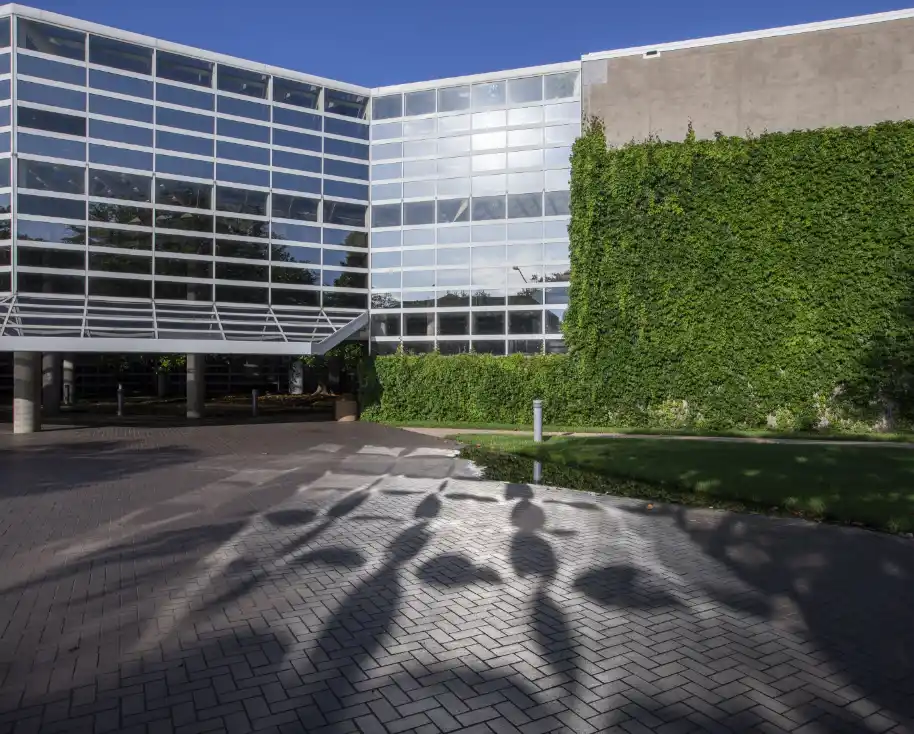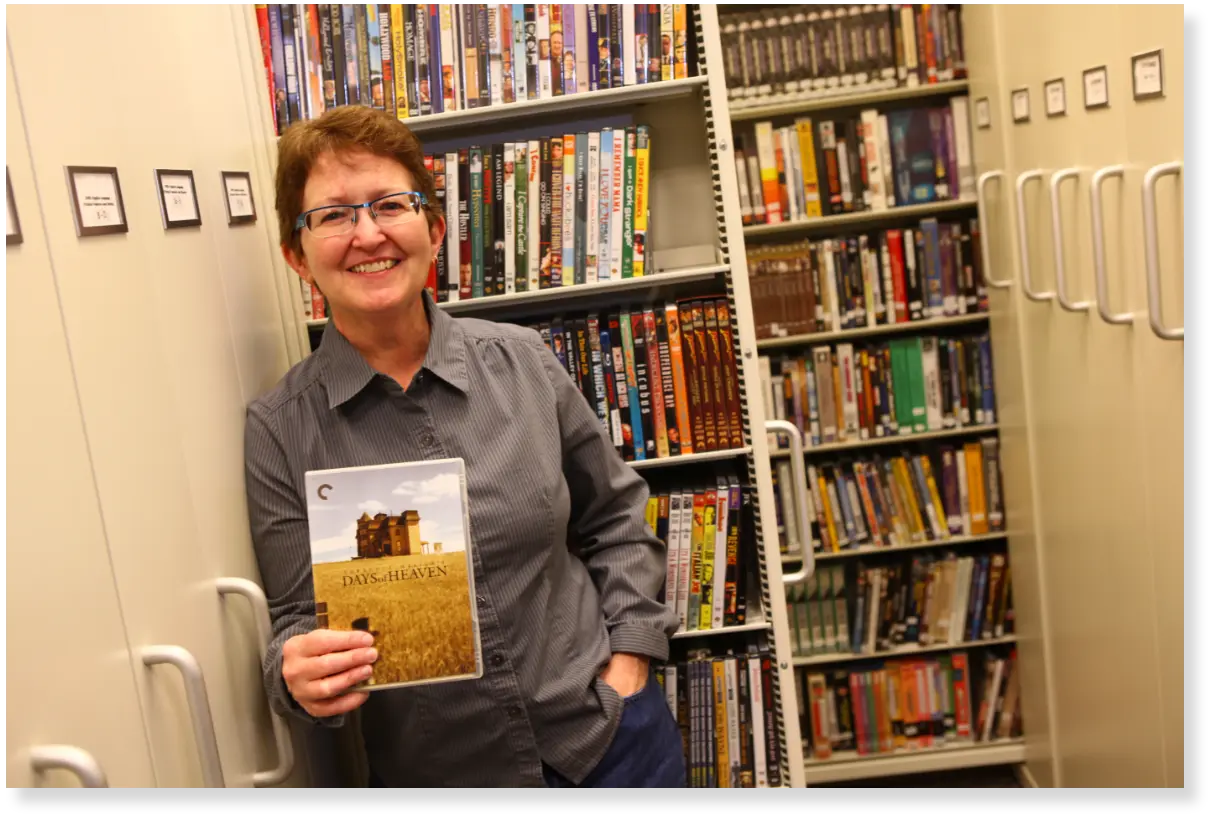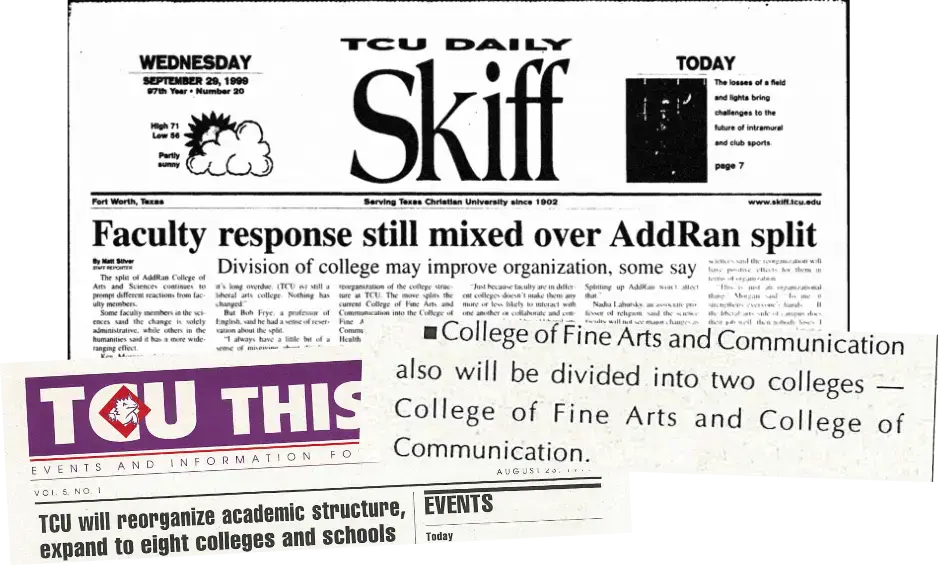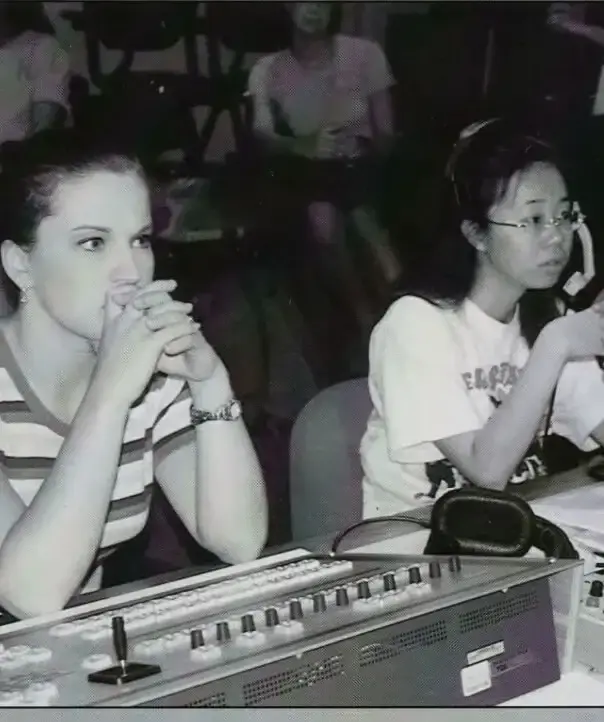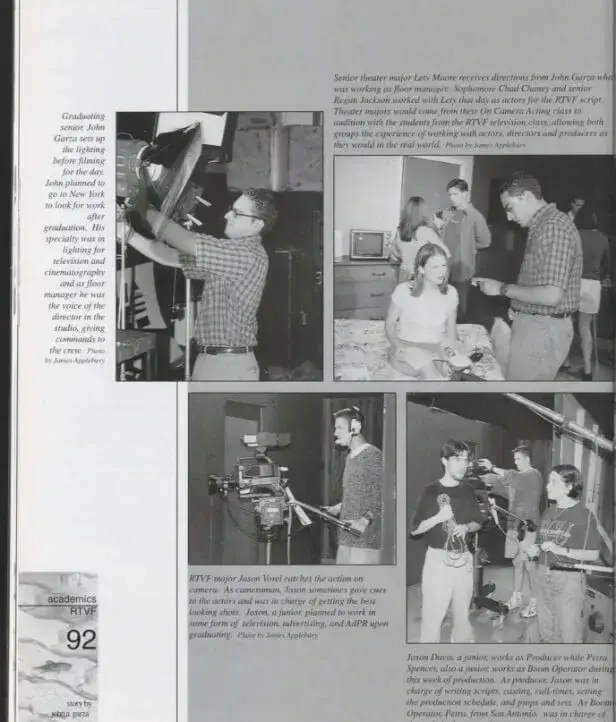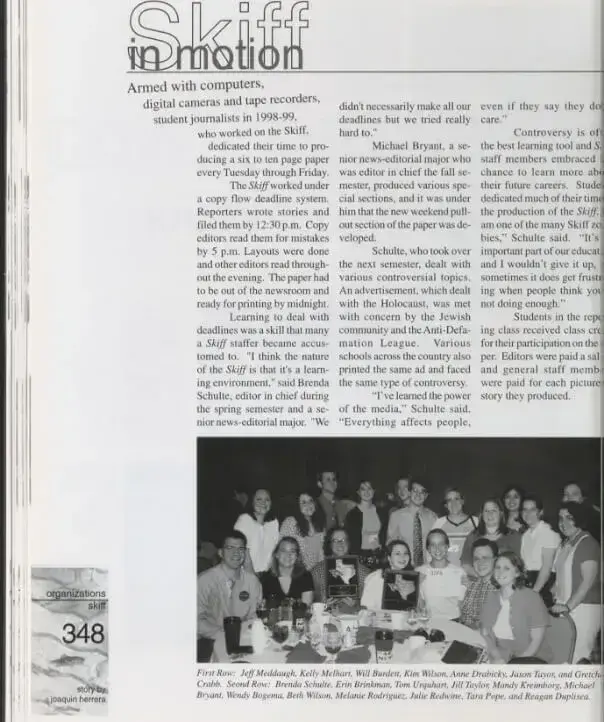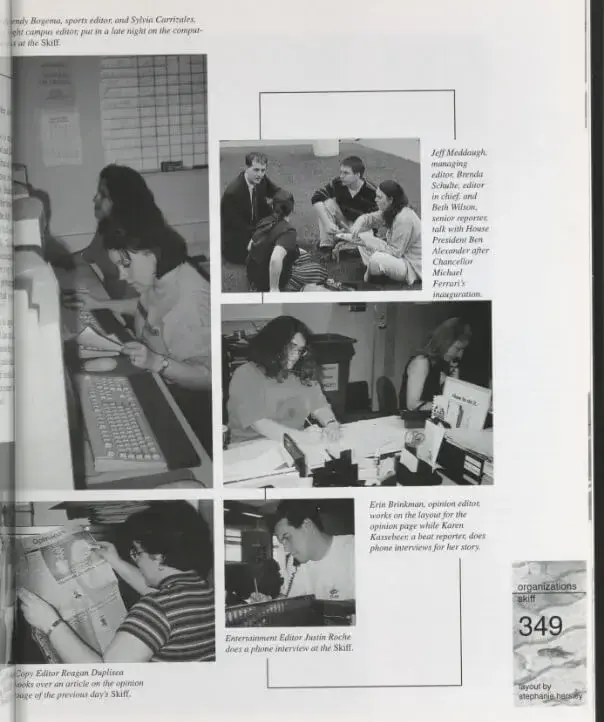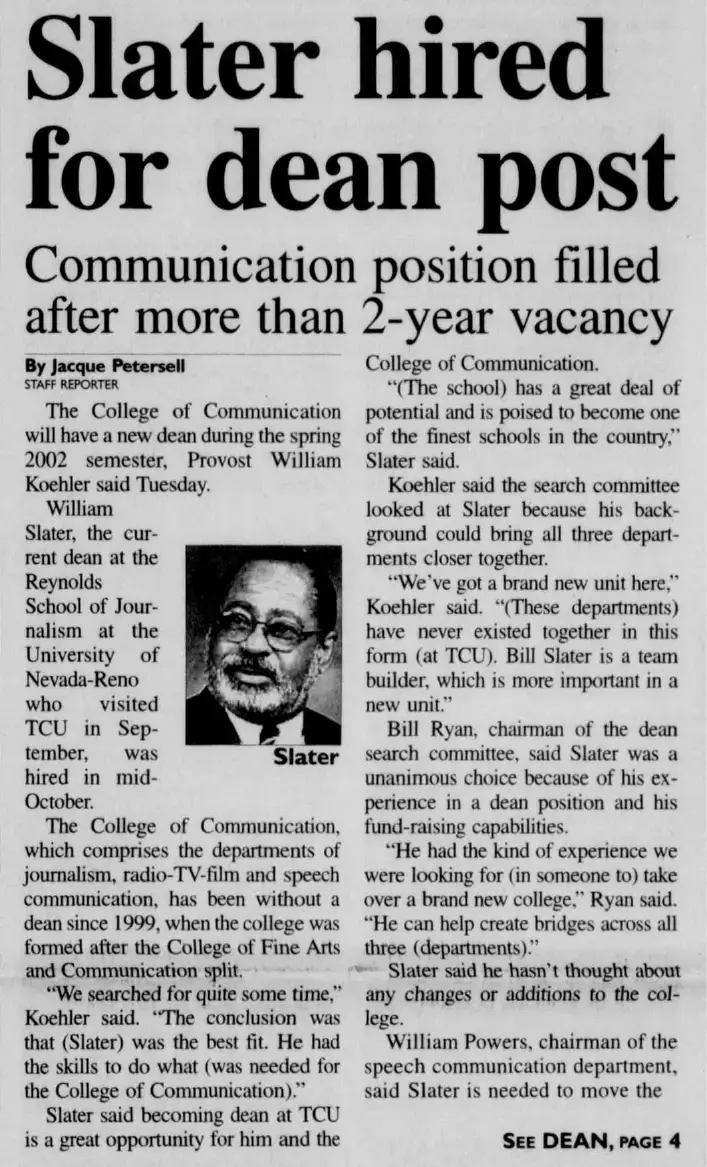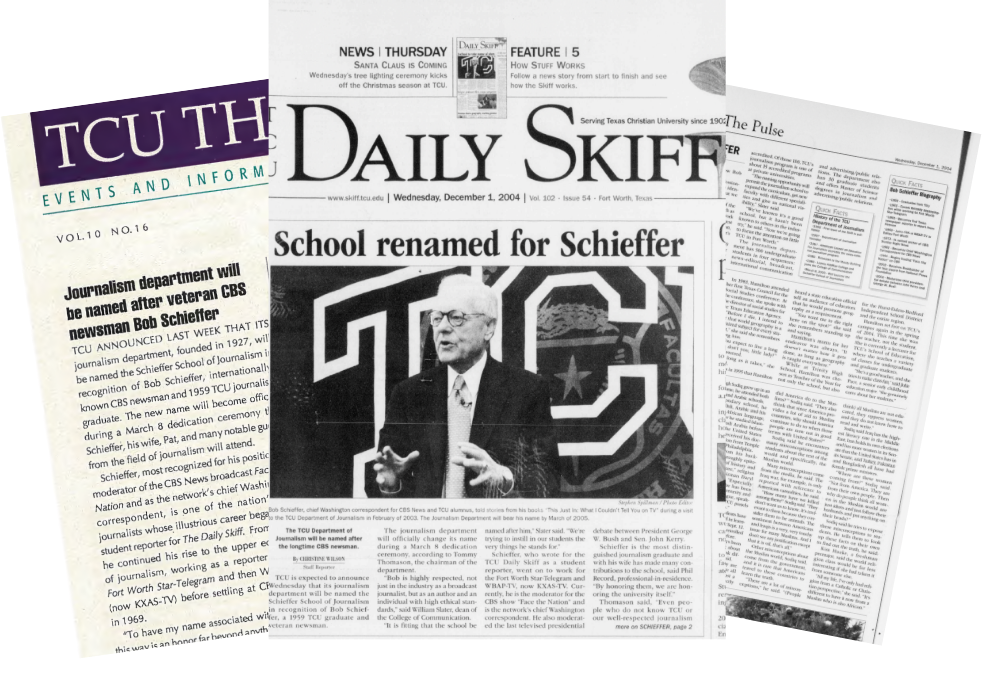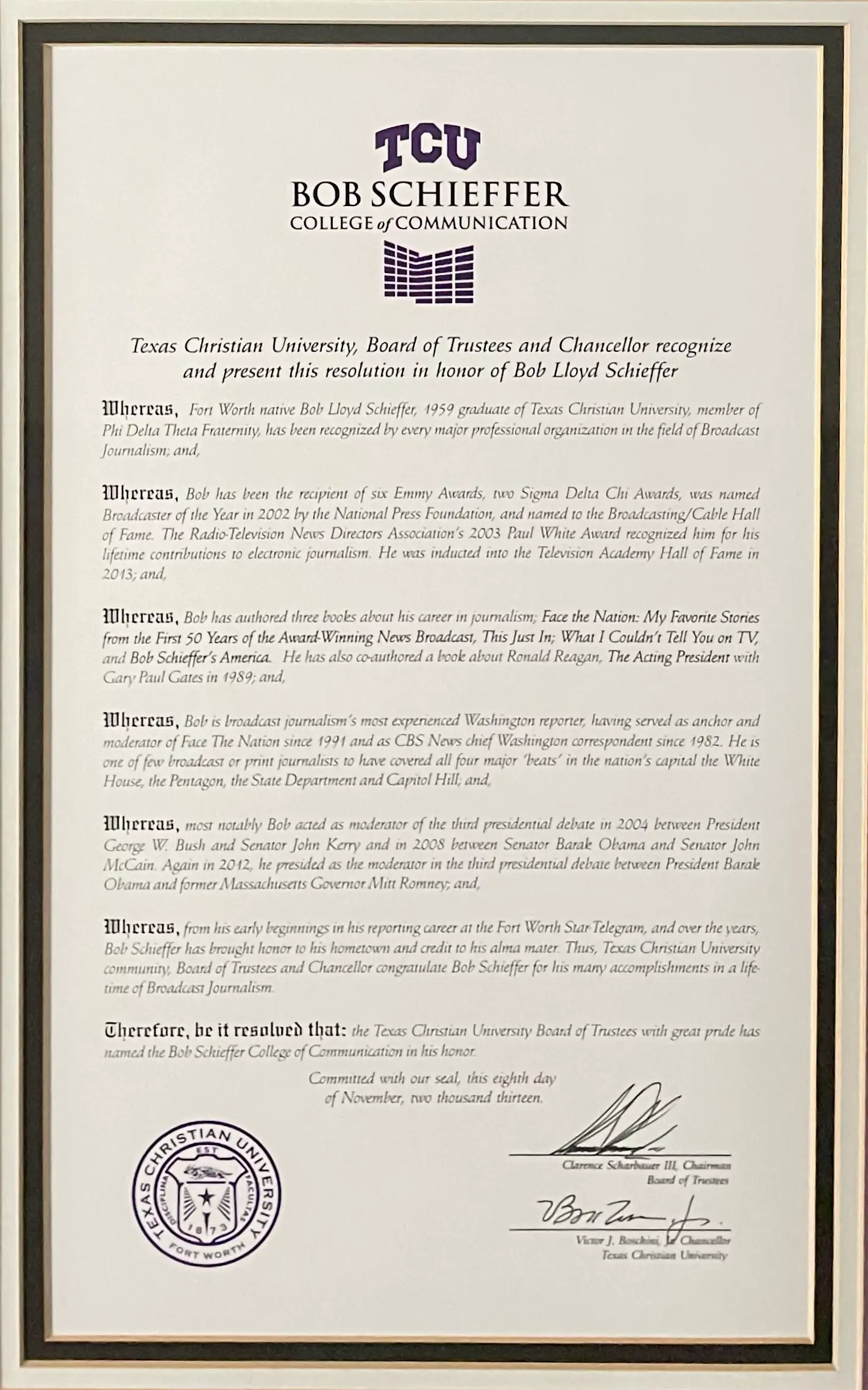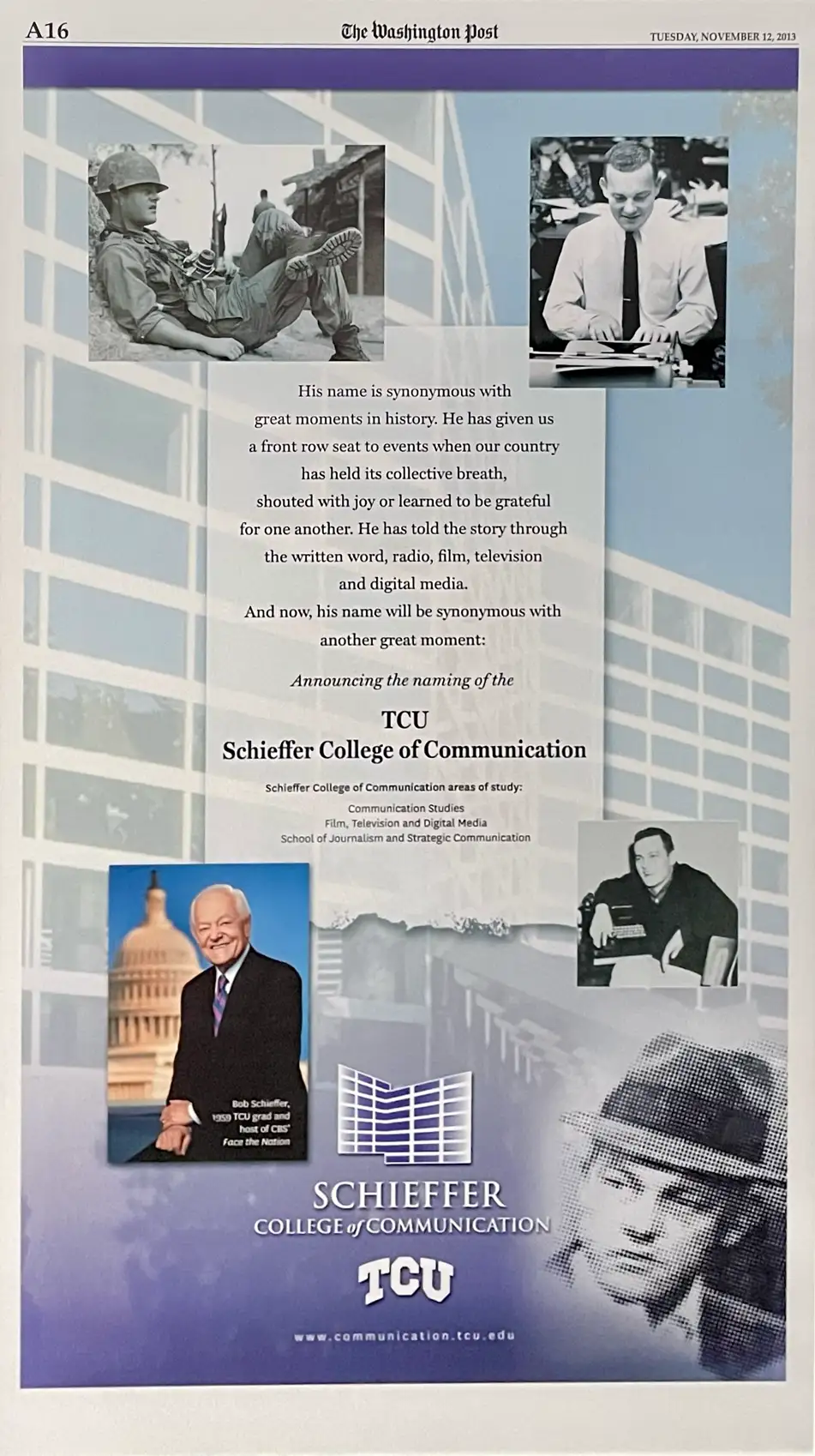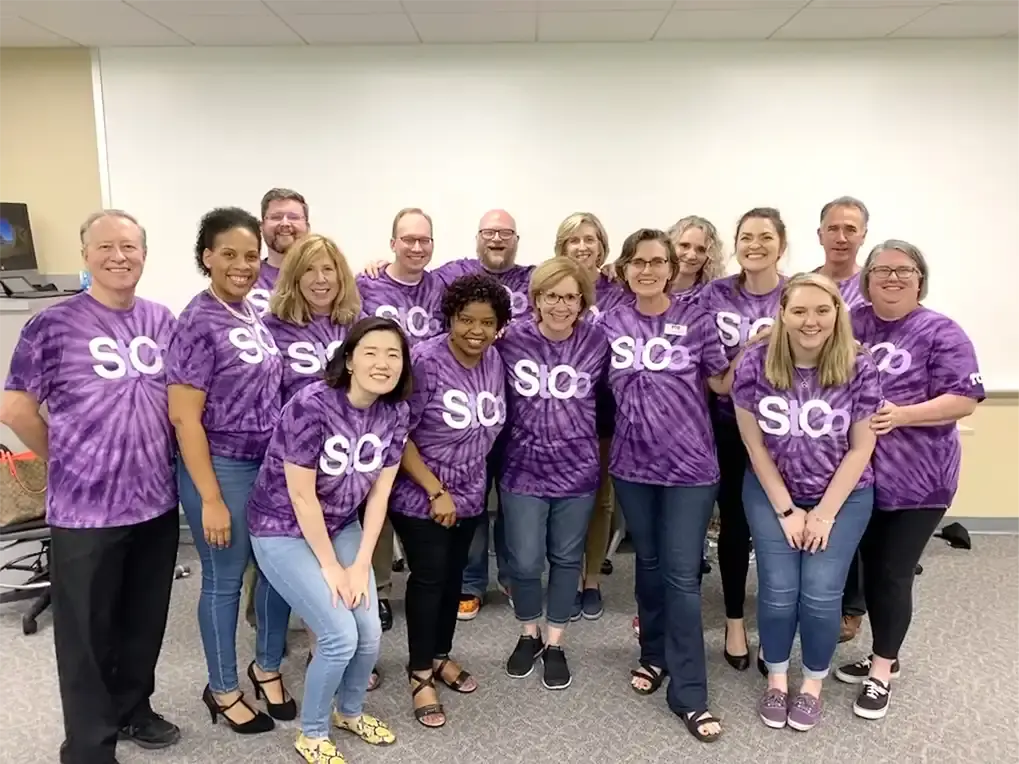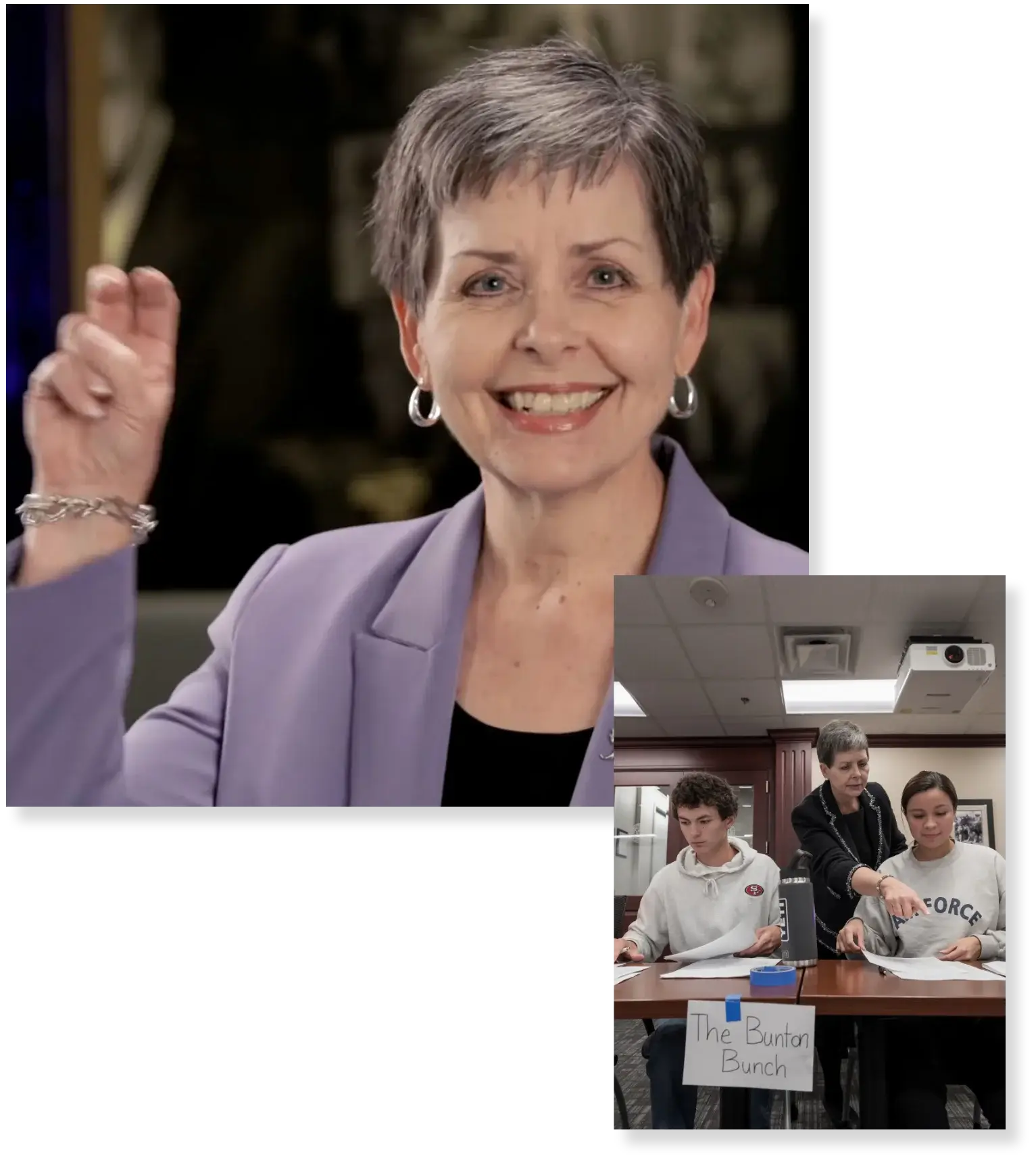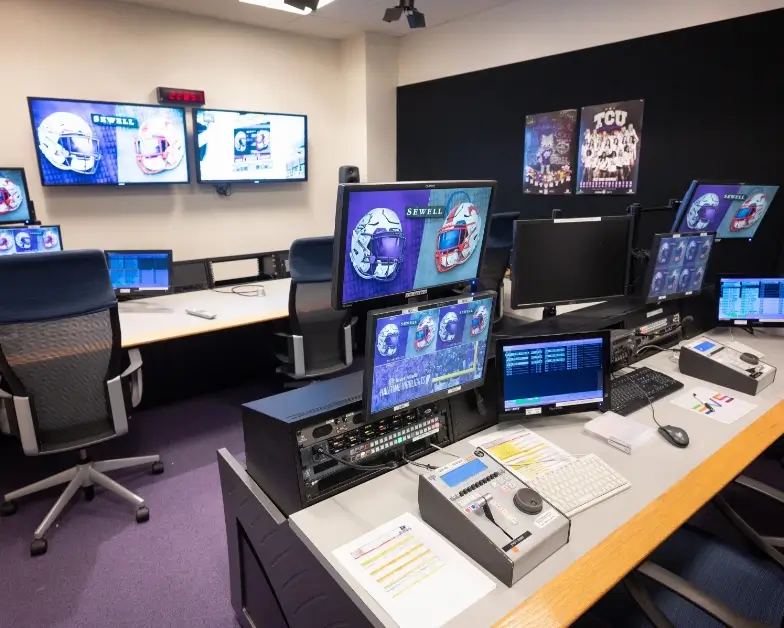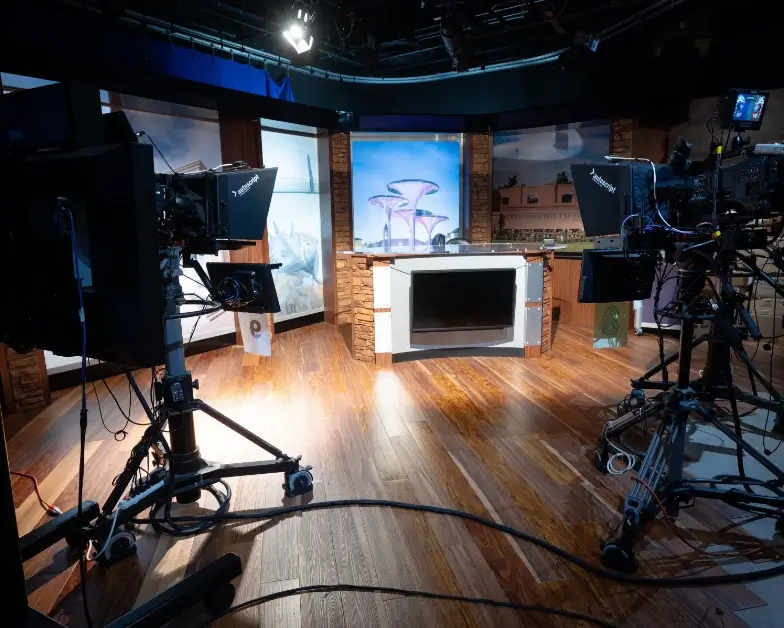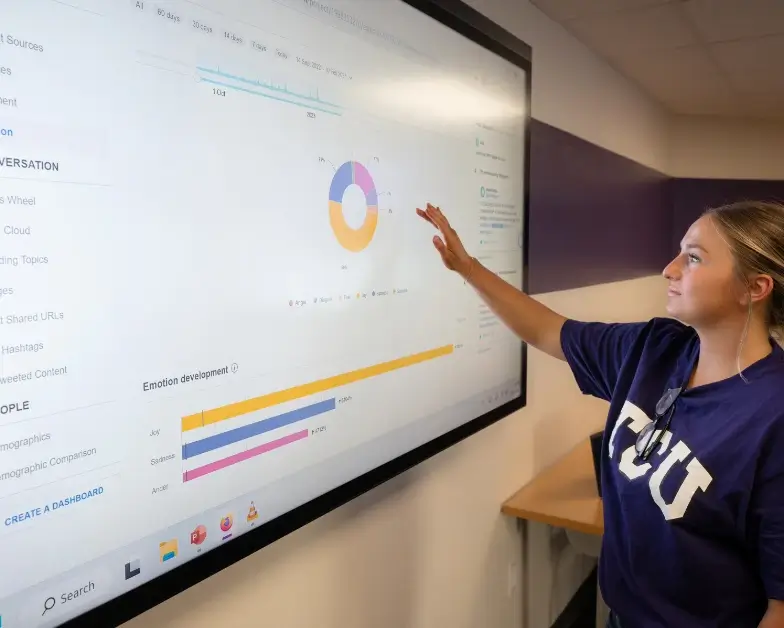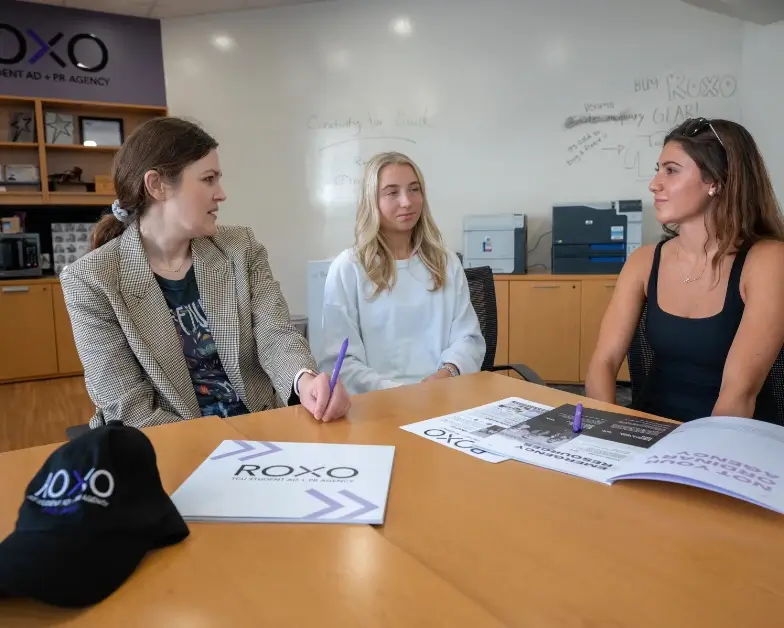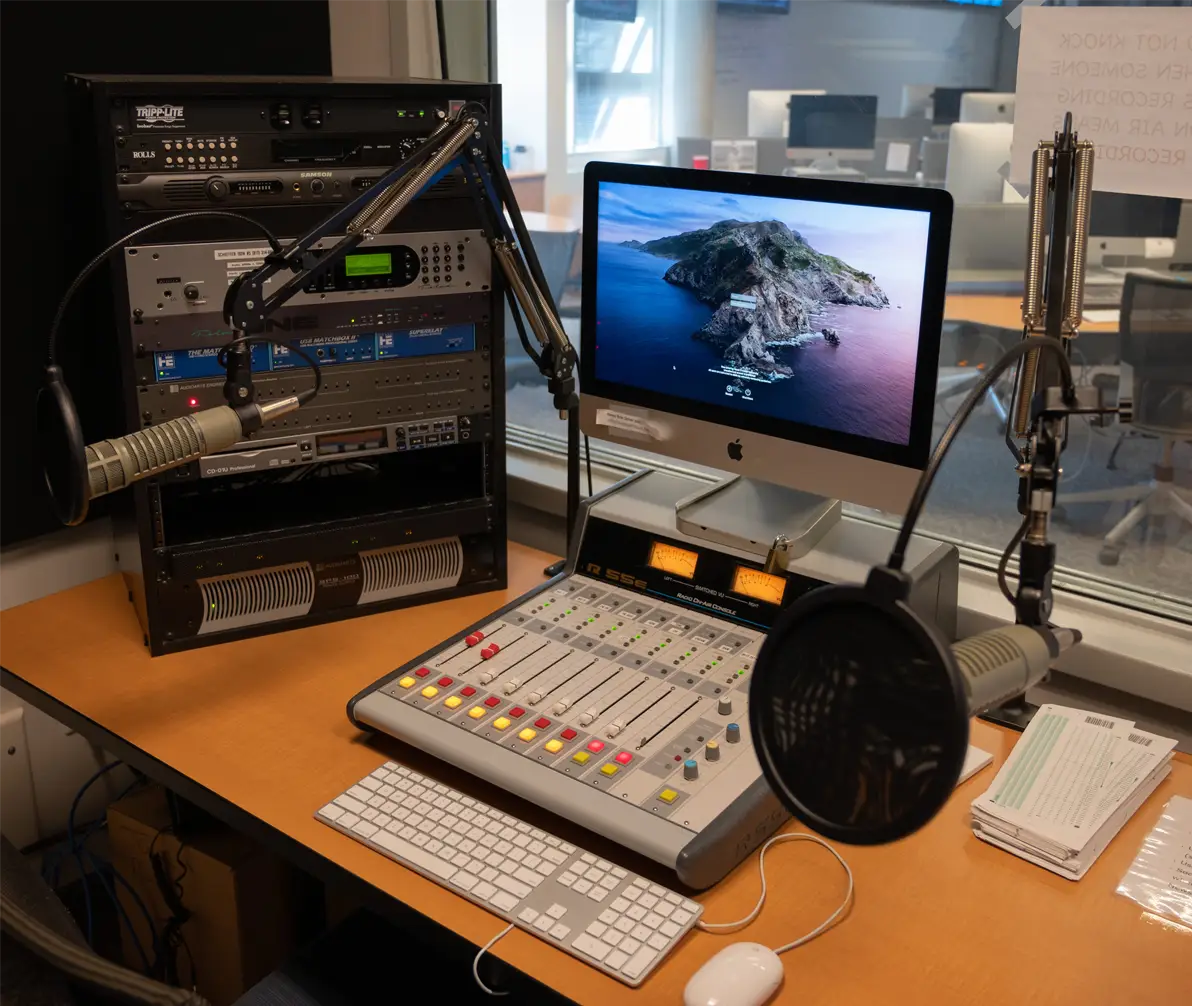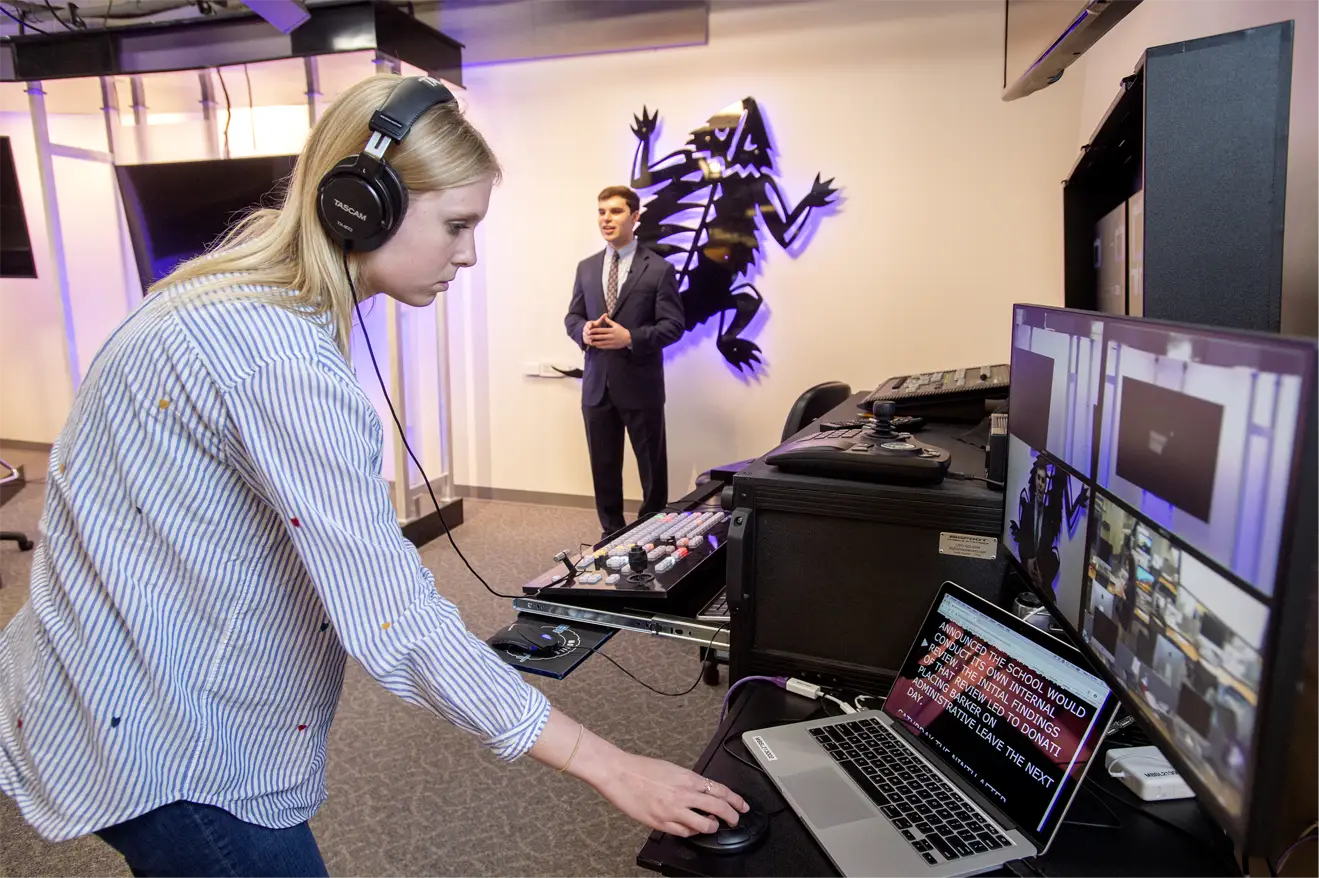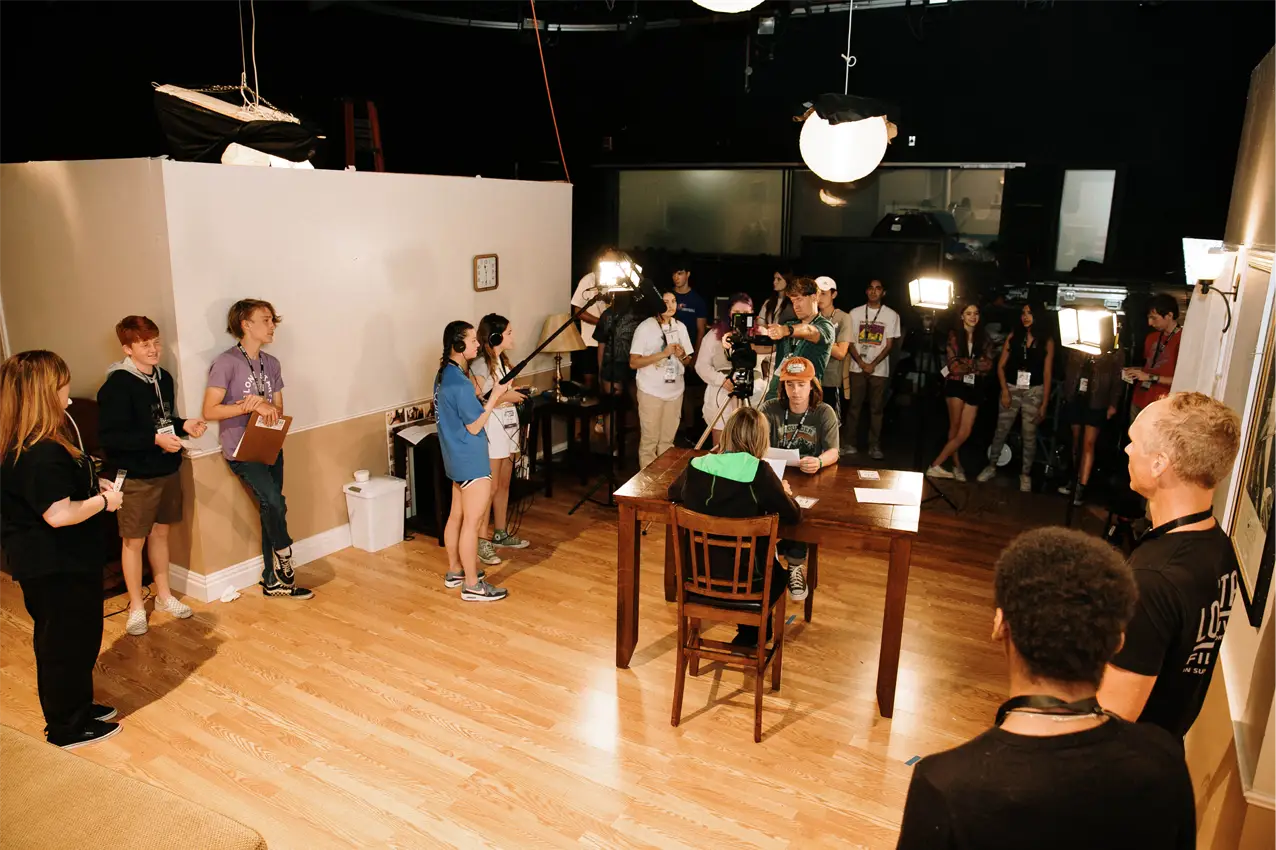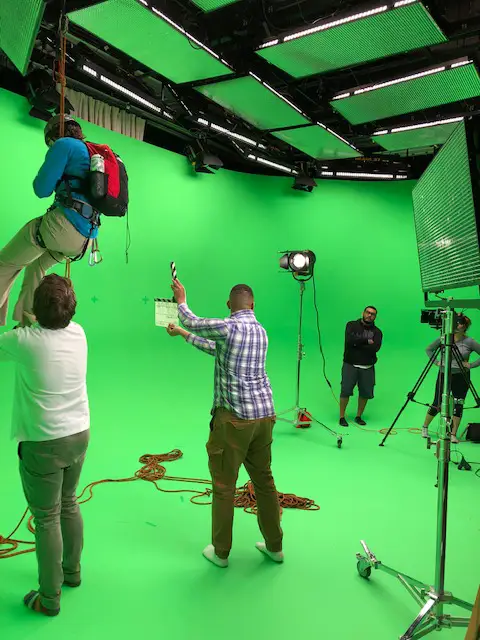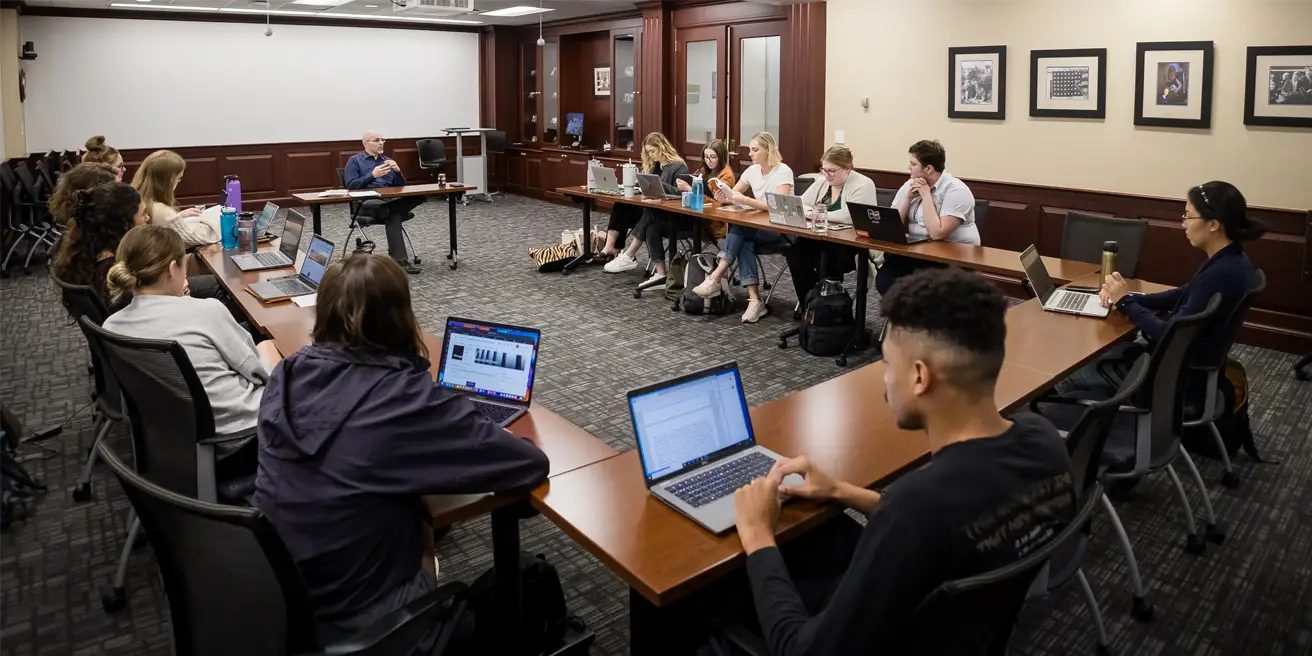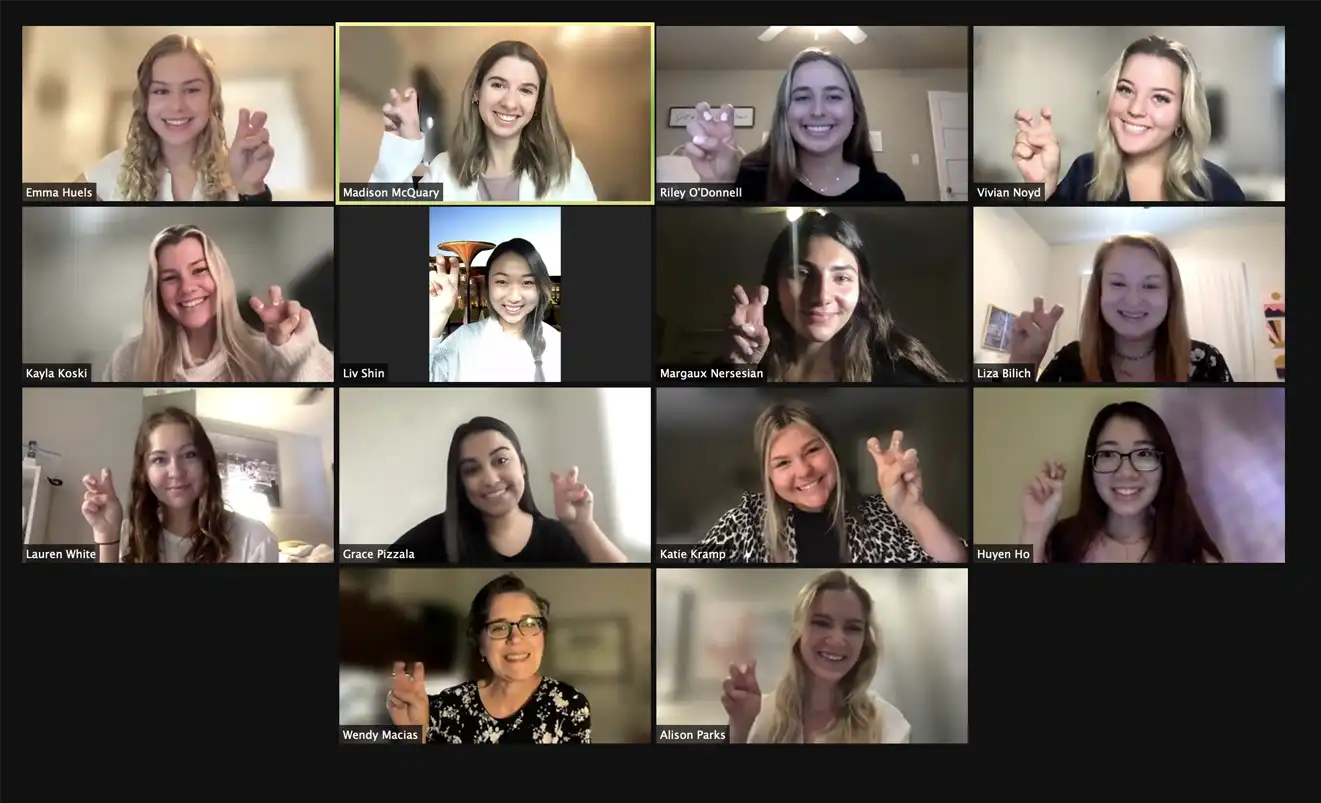An interactive timeline
TCU's Enduring Commitment To Communication
Communication has been a strength of TCU from its inception. We’ve taught oral communication since 1873, when oratory was one of the first required courses taught by our founders’ brother Thomas Marshall Clark. We broke gender and racial barriers in 1929, when we appointed the first female editor of The Skiff newspaper, and in 1935, when we hosted the first interracial college debate in the U.S. South.
From our past and into the future, the Bob Schieffer College of Communication continues to Lead On.

SCROLL
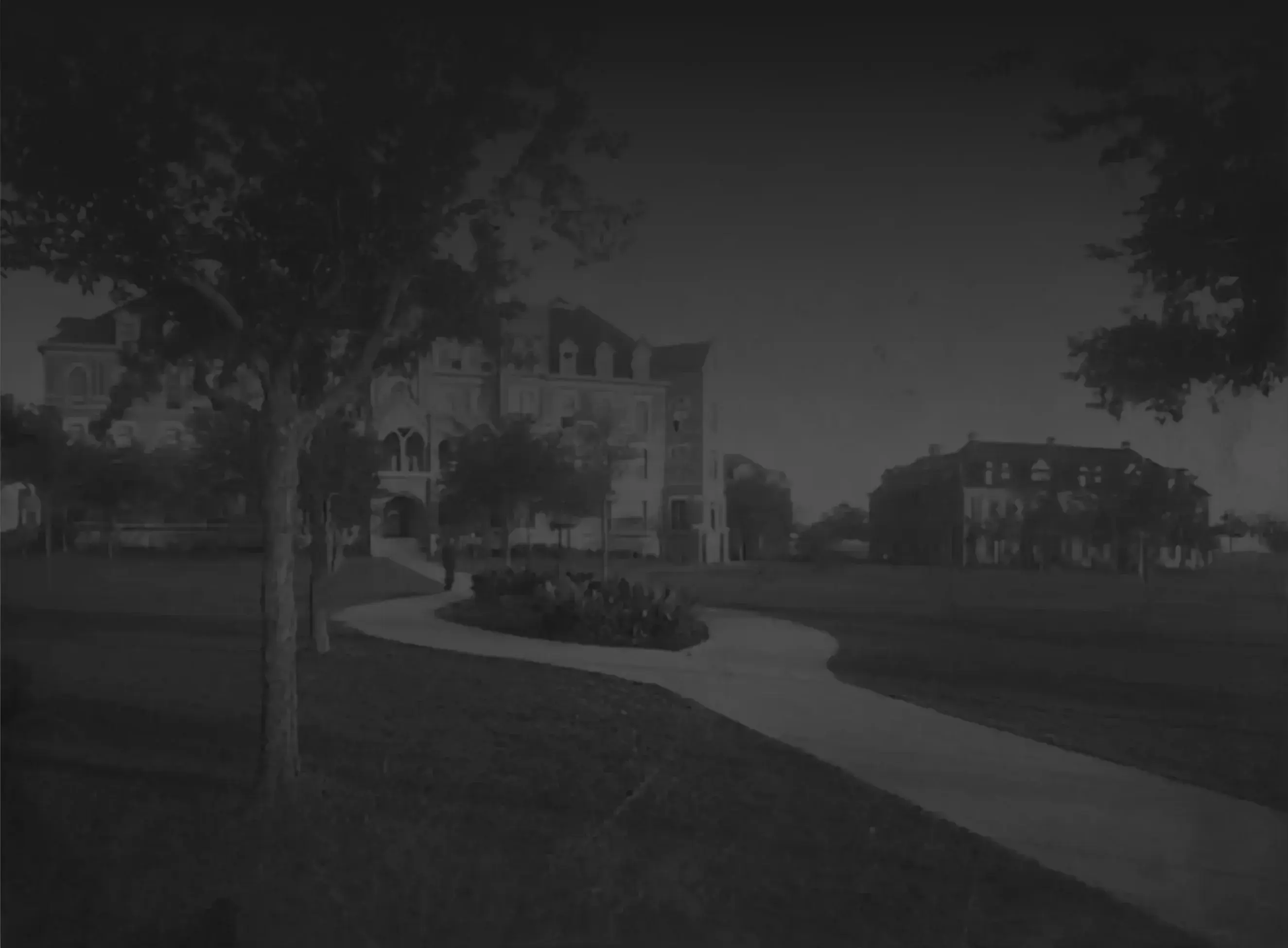
1873 - 1890
A Clark Brother Shapes Communication Instruction
When they opened AddRan College in 1873, founders Addison and Randolph Clark required all students to learn communication skills that included public speaking and debate. Beginning in 1873 and continuing for nearly two decades, Thomas Marshall Clark, the younger brother of the founders, taught public speaking, which was called elocution at the time. Nicknamed “Tommie,” Thomas Marshall Clark also served as treasurer of the college. In his 1919 book Reminiscences: Biographical and Historical, Randolph Clark lauded Tommie as a dynamic teacher, creative thinker and innovator who led many improvements in the college’s curriculum.
Over subsequent years, public speaking instruction was offered under a variety of academic units with such titles as the School of Expression, the School of Elocution, the School of Oratory and Physical Culture, the Department of the Spoken Word, and the Department of Speech. Although TCU’s current Department of Communication Studies was not named that until 2003, it’s clear that the oral communication skills that are central to the current department’s mission and that are required as part of TCU’s core curriculum for all undergraduate students were present from TCU’s earliest days.
1890
The college of oratory
is established
Before academic majors arose, students were permitted to select some specialized areas of study. Course catalogs from the early years of AddRan College describe six schools within the college that provided these specialized courses for students. The 1898 catalog identified the College of Science, Literature and Arts, the College of the Bible, the College of Oratory, the College of Business, the College of Music and the College of Art.
The first oratorical association was formed in the 1895-96 academic year, and the first debating club was established in 1900. The 1898 catalog noted that the oratorical association conducted a campus contest to identify a student whose public speaking skill qualified him or her to compete in Intercollegiate Oratorical Association of Texas competition.
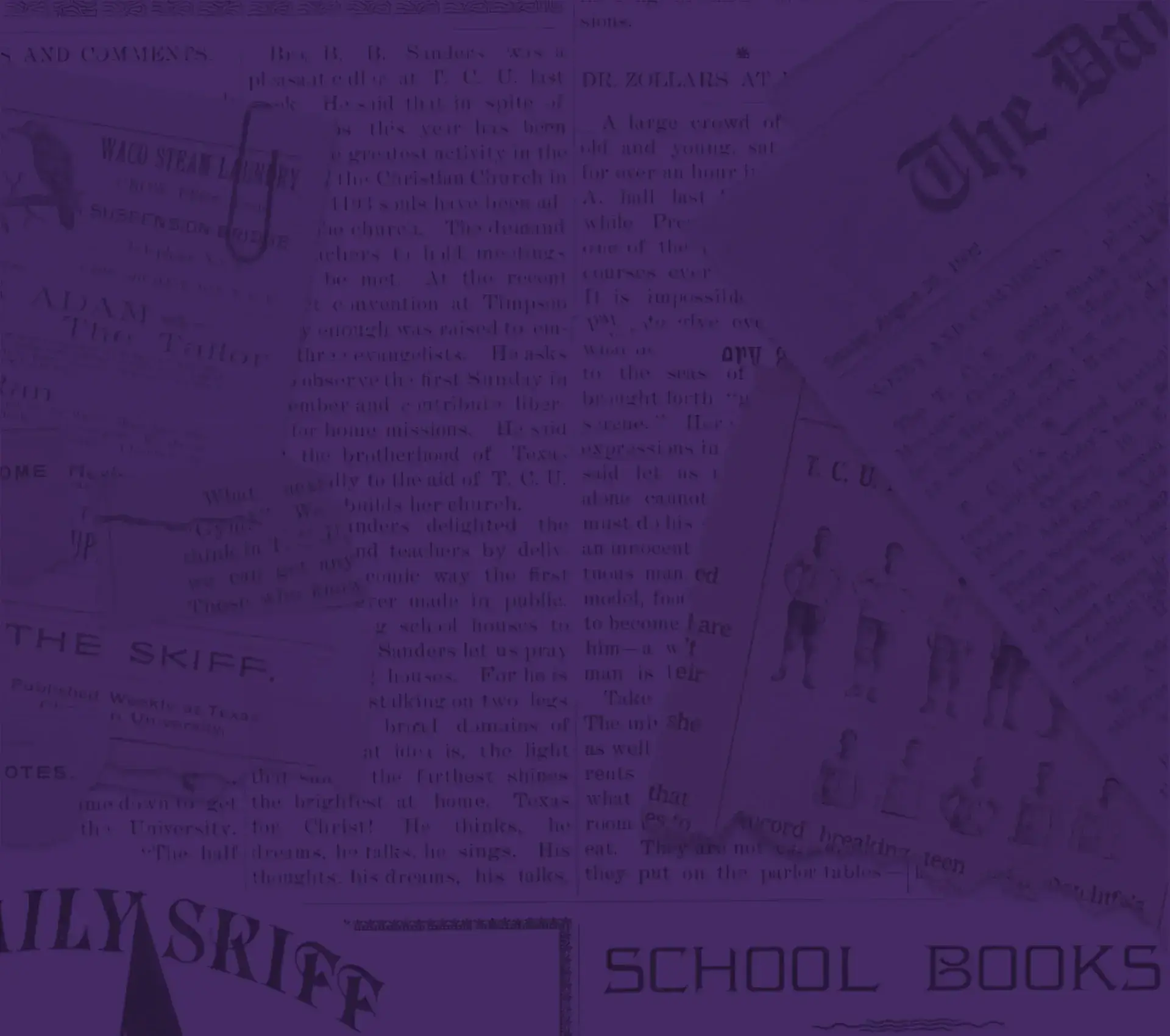
1902
The Skiff Newspaper sets sail
From 1895 to 1912, Addison Clark, Jr., published a monthly magazine titled The Collegian. He also created AddRan College’s first yearbook in 1897. But it was a student named Ed McKinney who founded the campus newspaper.
Although it seems odd to name a campus newspaper for a small boat typically rowed by one person, McKinney called the paper “The Skiff” because he hoped to sell enough subscriptions priced at 50 cents per year to “sail through the financial weather” and pay for his TCU education. Each Skiff edition proclaimed McKinney’s motto, “Rowing, Not Drifting” in pursuit of campus news.
In fall 2022, our Schieffer College celebrated the 120th birthday of The Skiff, which is now the oldest continuously published newspaper in Tarrant County.
VIEW FEATURED STORY1909
Journalism As A Professional Field
As early as 1909, the TCU Bulletin touted the importance of journalism as “a profession of worth and dignity” and suggested that studying journalism “shall not be hap-hazard” but involve “special preparation.” The catalog also noted that “Texas Christian University has been peculiarly successful in turning out men who are equipped and who become successful in this work.”
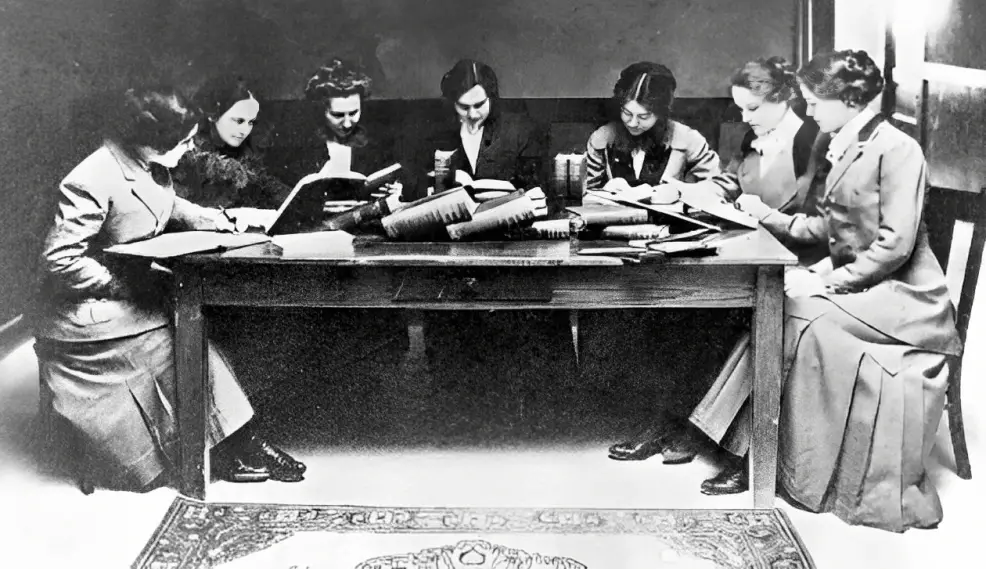
1912
The Gough Prize for Oratory Is Awarded
Dr. R.H. Gough, a TCU trustee, established the Gough Prize for Oratory in 1912 and awarded a $10 gold piece to the winner. The Gough Prize was continuously awarded through the mid-1970s. Over the years Gough Prize winners included students whose names later became well-known in TCU circles. For instance, the inaugural winner was Milton E. Daniel, who became a TCU trustee and whose generous contributions to the university were honored with the naming of the Milton Daniel residence hall, where today’s John V. Roach Honors College students live.
The 1943 winner was James M. Moudy, who became TCU’s chancellor and who was honored in 1982 with the naming of the Moudy Building that houses TCU’s Bob Schieffer College of Communication.
1923
Advertising classes join the curriculum
“Salesmanship and Advertising” appeared in the 1923 academic catalog. The fall semester course in salesmanship would offer “suggestions as to the opening, body and close of an interview, the pre-approach, the happy habit of industry and the mind of the buyer,” while the spring semester course in advertising would include “the preparation of copy, advantages of street car advertisements, posters, billboards, electric signs, newspaper, magazine, trade marks, and various types of publicity.”
This early advertising instruction paved the way for what is offered in today’s Bob Schieffer College of Communication as the Strategic Communication major that combines instruction in advertising and public relations.
1924
The Department of Public Speaking is created, with Lew Fallis as chair
Lew D. Fallis became chair of the newly established Department of Public Speaking in 1924 and remained at TCU until 1952. Fallis was credited with approaching public speaking not as the mechanical, learned skill called elocution but as a natural and personal expression of language, body and mind that can be honed and improved. The Department of Public Speaking would grow to include courses in theater, radio and television, speech pathology, and forensics and debate.
1927
J. Willard Ridings launches a Journalism Department & runs TCU public relations
Based on the popularity of student publications and students’ growing interest in careers in journalism, TCU in 1927 hired J. Willard Ridings to create a journalism department that opened in 1928. Eight journalism courses quickly appeared in the university catalog, and the curriculum was said “to offer instruction and practice in the fundamentals of newspaper work and to provide such studies as are best adapted to give the broad training necessary for the successful pursuit of journalism as a profession.”
Ridings also was charged with creating TCU’s first publicity department in two rooms in what is now Reed Hall. Ridings’ first news service release to local and regional newspapers about TCU’s accomplishments was issued on October 10, 1927.
That release trumpeted the fact that all of TCU’s debts had been liquidated by a $166,666.67 gift from the General Education Board.
Ridings quickly figured out that news releases about TCU’s athletics accomplishments would “put TCU on the map” across the country. Thus, news releases about sports victories, especially in football, soon outnumbered other subjects touted by the publicity department, which was the forerunner of today’s TCU Marketing and Communication division.

1928
Students form
the Radio Club
Students’ interest in the new technology of radio raged in the 1920s, and they founded the Radio Club in 1928. The popular club, which became the Radio Players in 1929, eventually spurred the growth of courses in radio and the emergence of a campus closed-circuit radio station.
VIEW FEATURED STORYListen
Visit the offical KTCU Website

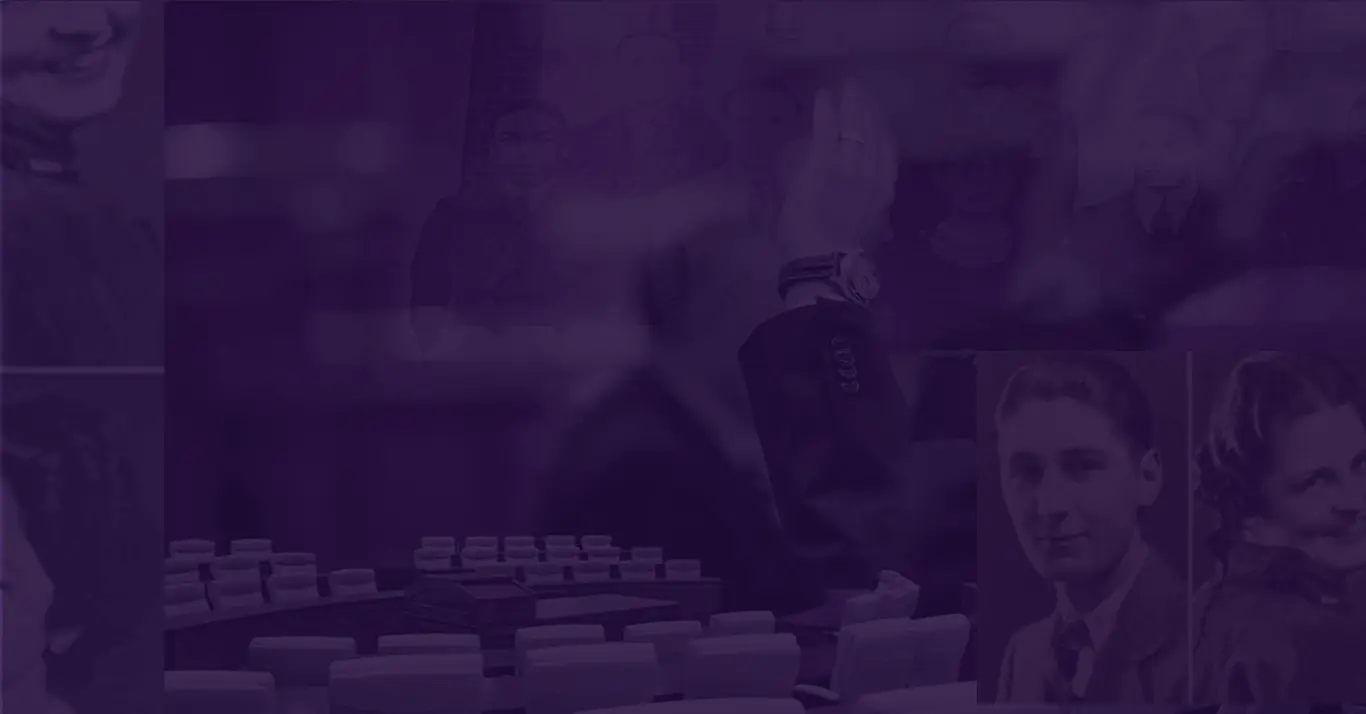
1935
Wiley College & TCU debaters make history
In 1935, students from Wiley College, a historically black college in Marshall, Texas, were invited to Fort Worth for a public debate with TCU students. The March 1935 event was the first interracial debate on a Southern college campus, and it was commemorated 80 years later in 2015, when teams from TCU and Wiley again visited each other to debate.
Wiley’s success winning a national debate title in 1935 was commemorated in a 2007 movie, “The Great Debaters,” which featured Denzel Washington as coach of a Wiley College team taking on a powerhouse Harvard University team.
In 2016, TCU continued its own long tradition of excellence in forensics by winning the Pi Kappa Delta national debate title.
VIEW FEATURED STORY1945
Drama courses gain attention
Students’ keen interest in the dramatic arts courses that were offered in the Department of Public Speaking resulted in a change in the department’s name to the Department of Speech and Drama. The next year, these programs joined the School of Fine Arts.
1948–1959
A radio major, KTCU & television courses are established
In 1948, the Department of Speech and Drama added a major in radio. In 1949, campus radio station KTCU was established, and the cost to go on air was $150. That same year, the Department of Speech and Drama moved into the newly constructed Ed Landreth Hall, where the first television courses were taught. Students were allowed to produce television programs in association with WBAP, which went on the air in Dallas/Fort Worth in 1948. In 1952, KTCU received permission to sell advertising and also began receiving news content from the Associated Press wire service.
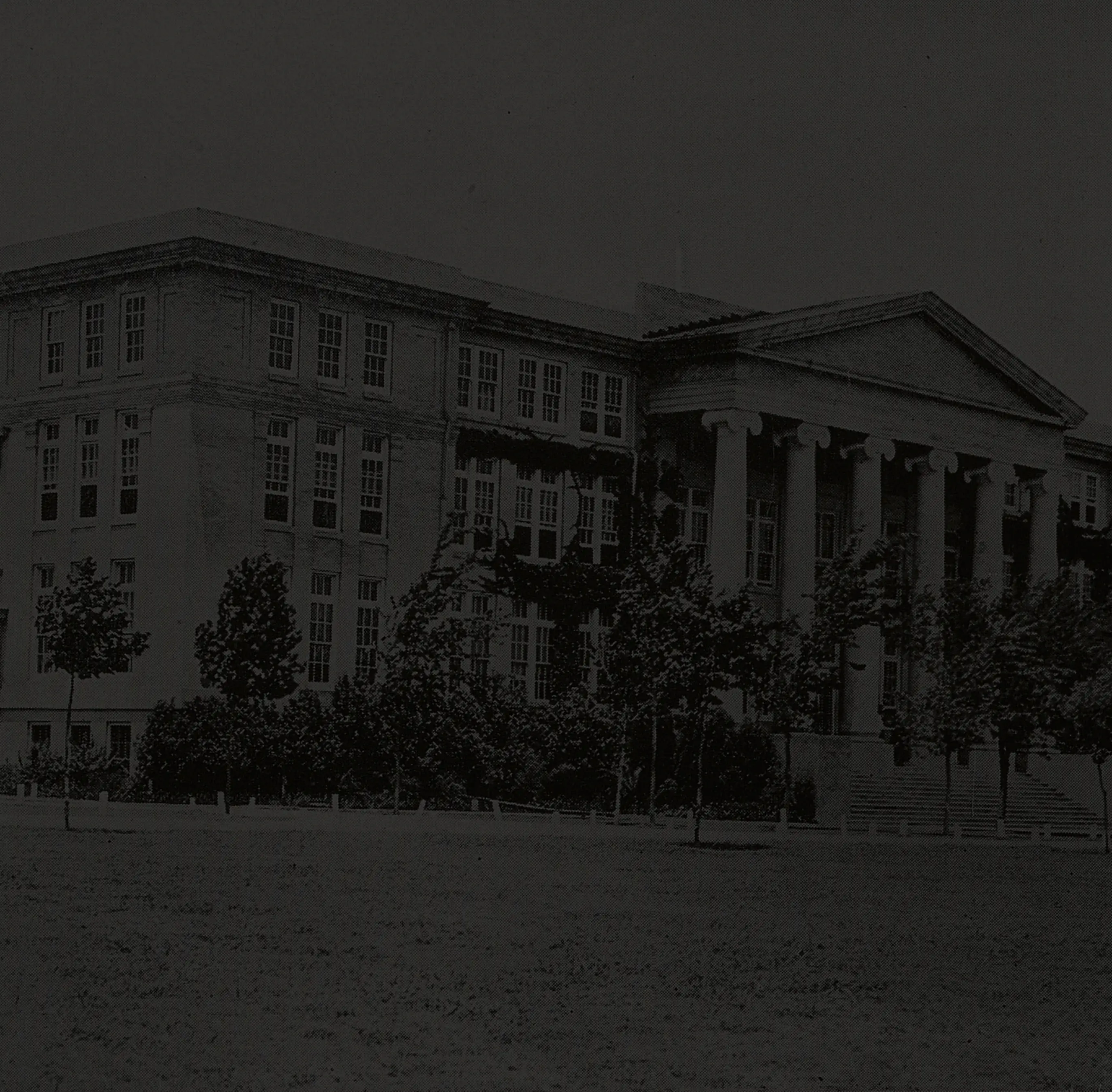
1958-1962
Speech & theater part ways
By 1958, course offerings and enrollments in both speech and drama had grown to the extent that each area needed its own administrative support, such that a separate Department of Theater Arts was established.
George T. Tade Named Chair Of Speech
The Department of Speech with its various divisions and programs in public speaking, radio and television, speech pathology, and debate and forensics, was so administratively complex that TCU hired as its new chair an administrator who brought to the position a decade of experience as a college dean and who was an ordained minister in the christian Church, Disciples of Christ. Dr. George Tade went on to become dean of TCU’s College of Fine Arts and Communication in 1974. He served as chair of the National Conference of Academic Deans and
on the executive council of the Southern Speech Communication Association. In 1978, he was among the first American educators to visit the People’s Republic of China, and he was a member of the International Council of Fine Arts Deans that visited Ecuador, Peru, Argentina, Brazil and Venezuela.
1959
Advertising courses serve both journalism & business majors
As chair of the Journalism Department, J. Wayne Rowland revised the curriculum so that both journalism and business majors could take advertising courses. They included Principles and Practices of Advertising, Ad Copy and Layout, Sales and Promotion, and Advanced Advertising. Journalism Department students who wanted to emphasize advertising took those courses as well as a marketing course in the business program.
1964
KTCU gains an FCC license
In 1964, KTCU gained an FCC license to begin operation as an educational FM radio station operating at 89.1 megacycles. That summer, a special tower was placed atop Ed Landreth Hall to permit the FM signal. In 1966, Larry Lauer, former program director at Washington, D.C., public radio station WAMU-FM, was hired to run KTCU.
1967
Journalism is nationally accredited
The news-editorial program of TCU’s Journalism Department was accredited by the American Council on Education for Journalism. TCU was only one of about 60 programs nationally recognized through accreditation and the first private university journalism program in Texas to gain the status, which it has maintained ever since.
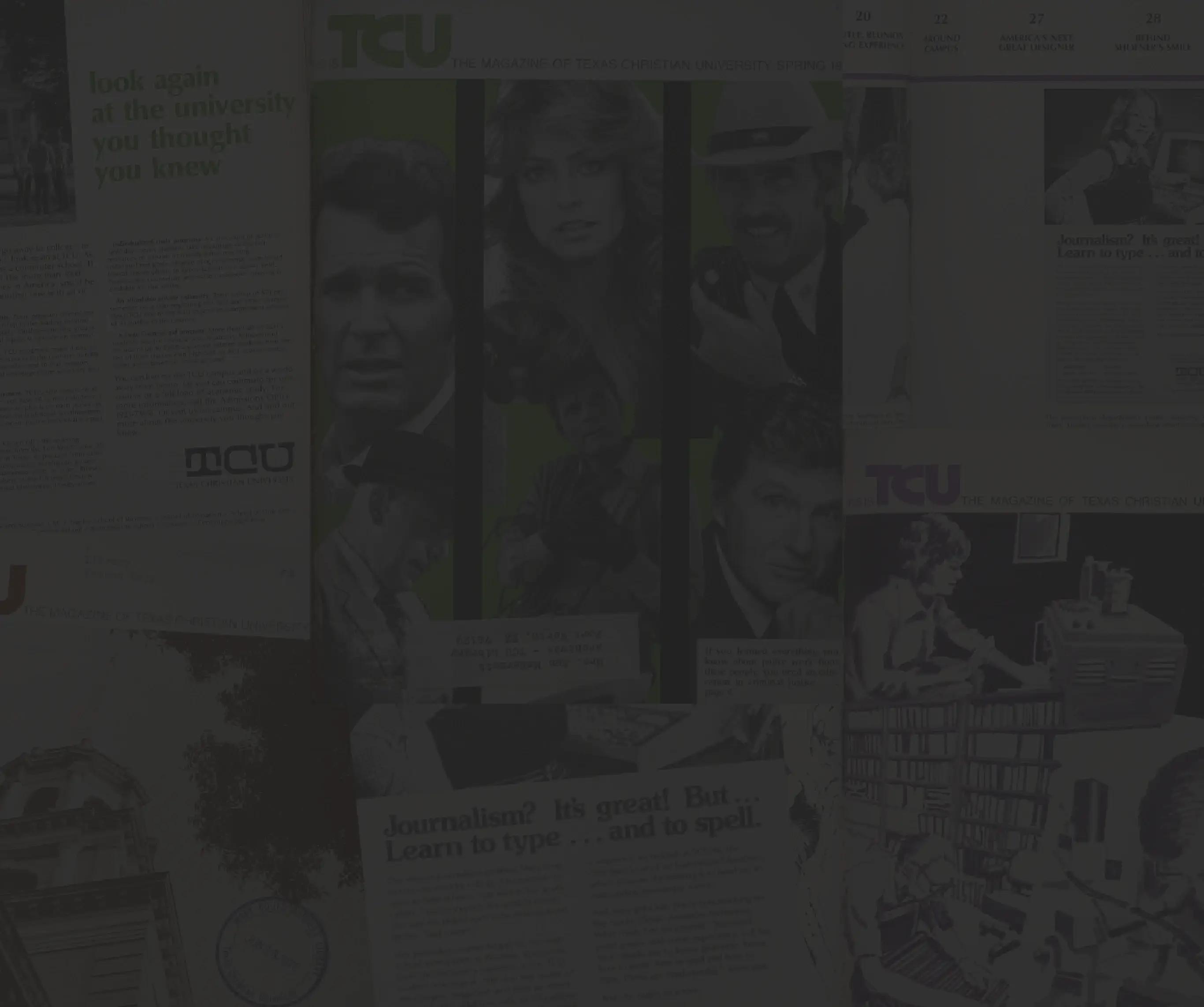
1976
Speech & Drama Department Includes speech & hearing pathology
In 1948 the Department of Speech and Drama had added a Division of Speech and Hearing Pathology, which remained until 1990 in what became the Department of Speech Communication. In 1976, TCU opened a new facility for the programs in speech and language pathology and audiology at the corner of Stadium Drive and Wabash streets. The 11,470 square foot, state-of-the-art facility housed equipment for observation, recording, hearing testing and other needs. In 1992, the program became the independent Department of Communication Sciences and Disorders, forerunner of the Davies school of Communication Sciences and Disorders that is now contained in TCU’s Harris College of Nursing and Health Sciences.
Journalism Enters the electronic age
The Department of Journalism installed electronic systems tied to central TCU computers, disc storage units and printers. The sophisticated system, used by both The Skiff newspaper and Image magazine, streamlined the flow of story writing, editing, storage, printing and typesetting.
1977–1979
Public relations majors are offered
In 1977, the Journalism Department initiated two bachelor of science programs in public relations. One focused on expertise in media with requirements in business, speech or commercial arts, and the other emphasized research in public relations.
Publication Relations Student Society of America
In 1979, a TCU chapter of the Public Relations Student Society of America formed and held its first meeting. The group welcomed students in public relations, advertising and journalism. The chapter today is named the Douglas Ann Newsom PRSSA chapter, in honor of the long-time, internationally recognized public relations professor who advised the chapter for many years.
1979
Gwendolyn P. Tandy Memorial Film Library supports film analysis
Founded with a gift from donors Connie and Jesse Upchurch, Sr., the Gwendolyn P. Tandy Memorial Film Library grew into a collection of more than 15,000 films and television programs used by film, television and digital media faculty members as a teaching resource in their classes.
In fall 1988, the first Tandy Memorial Film Library grant was awarded to student Scott Tobin, who received $2,000 to support the production and post-production costs of an original film he wrote to win the prize.
1980
The KTCU tower goes up
A massive, 321-foot tower was constructed in the parking lot outside Amon Carter Field to provide radio station KTCU with upgraded transmission ability. The tower expanded the listening radius from the immediate campus to a 20-mile distance.
The station today maintains a vibrant presence on the radio spectrum and also reaches global audiences via digital livestreaming.

1982
Dedication Of The J.M. Moudy Building
Designed by the renowned firm of Kevin Roche, John Dinkeloo, and Associates to make an architectural statement about contemporary communication and the arts, the Moudy Building incorporated a unique blend of glass canopy, extensive landscaping and light brick that today makes the building distinct from the rest of the TCU campus.
VIEW FEATURED STORYThe endowment for the building from the Amon Carter Foundation was the largest gift (other than a bequest) ever made to TCU. Amon Carter was the legendary owner of the Fort Worth Star Telegram and a prominent TCU booster whose name is honored on TCU’s football stadium. His influence was wide-ranging,
extending from his role in ensuring American Airlines and the Dallas-Fort Worth International Airport are headquartered in Tarrant County to his role in the founding of Big Bend National Park, where Carter peak bears his name. Mr. Carter was a friend and employer of TCU graduate Bob Schieffer, for whom the College of Communication now is named.
1998-2020
Dr. Joan McGettigan curates weekly film series
Assistant professor Joan McGettigan launched a classic film series in 1998, her second year on the radio, television and film faculty. Her department chair labeled the series’ success “phenomenal” at the end of its first year and credited it entirely to McGettigan. The next year, he wrote, “I couldn’t have imagined that the RTVF Film Series would increase in popularity. And yet, it has! … Judging by the attendance, those who come on Thursday nights are loyal and quick to tell others about this excellent Film Series.”
Many years later, one of McGettigan’s faithful attendees said of the film series, “It’s one thing to go out and buy the film on DVD, but it is not the same. … Sometimes even the special features don’t tell you everything that [Dr. McGettigan] does.”
McGettigan continued the film series, which she sometimes referred to as her “Thursday night movie crowd,” until spring 2020. Its 22-year run was abruptly halted by the global pandemic, much to the disappointment of faithful patrons who had been joining her to learn about and view classic films each Thursday evening for years. Health issues prevented McGettigan from reviving the series after the pandemic, and she retired from the faculty in 2022.

The College of Communication is created by TCU
As the 1999-2000 academic year began, TCU Chancellor Michael R. Ferrari announced a Commission on the Future of TCU and a significant academic reorganization of the university. The reorganization increased the university’s number of academic colleges from six to eight, and TCU hired seven deans over a two-year period to lead the reorganized colleges.
One of the colleges that was divided was the College of Fine Arts and Communication, which was split into a College of Fine Arts and a College of Communication. The fine arts dean search was among the first of the dean’s searches to be conducted during 1999-2000, and it resulted in hiring an inaugural dean of the College of Fine Arts who arrived for the beginning of the 2000-2001 academic year. Meanwhile, Dr. David Whillock was asked to serve as interim dean of the new College of Communication.
To attract attention to TCU’s plans, Ferrari invited alumnus Bob Schieffer to chair the Commission on the Future of TCU, which included 21 task forces and some 400 members from around the university. The Commission on the Future of TCU in fall 2000 awarded the College of Communication $500,000 for upgrades to classrooms and technology.
2002
TCU appoints William Slater the first College of Communication dean
A national search for the inaugural dean of the freestanding College of Communication occurred during 2001. It resulted in the hiring of Dr. William Slater, whose campus interview process was unusual, to say the least. Slater, then dean of the Reynolds School of Journalism at the University of Nevada at Reno, visited campus in September. TCU Magazine reported in its winter 2001 issue: “On Sept. 10, Bill Slater cheered loudly with us from the stands at the TCU-SMU football game. On Sept. 11, he wept with us at campus prayer services” held after the 9/11 terrorist attacks on New York and Washington, D.C. With air traffic grounded across the country, Slater’s campus visit was prolonged. He later described TCU as “one of the most caring places I have ever seen.”
TCU Magazine noted that Slater’s mission for the nascent College of Communication would be “to unite the departments of radio-television-film, speech communications and journalism, to find funding sources for their unique professional programs and to help the college increase its national prominence.”
The Skiff newspaper, which noted that “Slater is the first African-American academic dean at TCU,” reported that his selection had been a unanimous choice of the dean search committee and that Provost William Koehler called Slater “a team builder” who “had the skills” to unite the college’s academic departments.
Slater stepped down from the deanship in 2008 and served as journalism faculty until his retirement in 2012.

2005
The Schieffer School of Journalism is named
In fall 2000, while working on the Commission on the Future of TCU, a sub-group focused on the College of Communication suggested that the Journalism Department had grown to a size that perhaps merited its promotion from department to school status. The Journalism Department , which included advertising, journalism and public relations majors, said its number of majors had grown from 257 in 1994 to 450 in fall 2000.
By 2005, TCU agreed the department should be elevated to the status of a school. That spring, TCU named the department the Bob Schieffer School of Journalism. Schieffer, a 1959 graduate, visited Fort Worth on Tuesday, March 8, for a naming ceremony, after which he hosted a panel of well-known journalists for a discussion called the “State of American Journalism Symposium.” Panelists included famed Washington Post Watergate reporter Bob Woodward and NBC News anchor Tom Brokaw to discuss the state of journalism.
Schieffer was due to arrive In New York on Thursday, March 10, to begin a two-year run as anchor of the CBS Evening News. CBS News President Andrew Hayward told guests at the symposium that when he offered Schieffer the anchor position, Schieffer replied,
“That would be dandy, Andrew. I’d be glad to help you, but only if it’s after March 8.”
By summer 2013, the Schieffer School of Journalism was re-named the Schieffer School of Journalism and Strategic Communication, recognizing the fact that most of the school’s students were choosing to emphasize advertising and public relations work.
2008
The advertising & public relations sequence becomes strategic communication
The “Ad/PR sequence,” as it was called after its creation in the 1970s by professors Newsom and Raskopf, became the strategic communication program in 2008. The new name reflected the continuing emphasis on requiring students to learn how advertising and public relations functions complemented and blurred with one another.
2008 - 2012
Sports broadcasting program takes off
The first sports broadcasting class at TCU was taught in 1998 by instructor Chuck LaMendola. Over the next decade, he added production courses that emphasized such key skills as producing sports broadcasts remotely and theory-based courses such as broadcasting and sports in a global society.
By fall 2008, the Radio-TV-Film Department was ready to offer a sports broadcasting major. Instructor Mike Martin said “the best aspect” of the new program would be the “hands-on experience” students would get producing, directing, shooting video, and managing replays during live broadcasts of TCU sports.
By winter 2012, the sports broadcasting program had received a $2.6 million equipment upgrade that included six high-definition video cameras with long lenses to produce TCU home conference games for Fox Sports Southwest.
Lamendola told TCU Magazine that the new cameras, combined with new audio and video editing equipment, gave sports broadcasting students exposure to equipment and facilities as good as those used by professionals across the nation. Lamendola added that a sports broadcasting major could work on as many as 160 nationally televised sports events by the time they graduated from TCU.
2010
Convergence center opens
In February 2010, the Schieffer School of Journalism dedicated what it called a “convergence center” on the second floor of the Moudy South building. With several million dollars’ worth of support from TCU and donors, the center provided integrated space for students’ print, video and online news productions including TCU 360.com student media, The Skiff newspaper, Image magazine and “TCU News Now” broadcasts.
2011
ROXO Agency Opens for Business
The student-run Roxo advertising and public relations agency was launched thanks to a generous corporate partnership with BNSF and the BNSF Foundation. In its first decade, Roxo employed and prepared some 400 students, who pursued real-world, for-profit client work for more than 100 businesses and organizations. Social enterprise clients and community engagement projects were also a priority for Roxo, whose student staff members produced approximately $50,000 worth of pro bono work in the agency’s first decade.
Being hired to work for Roxo quickly became a competitive process among strategic communication majors. “Roxo is the cool, innovative and enriching internship that everyone wishes they could have,” one agency member said. “Working on real client work in an environment of brilliant, motivated communicators creates an unparalleled experience.”
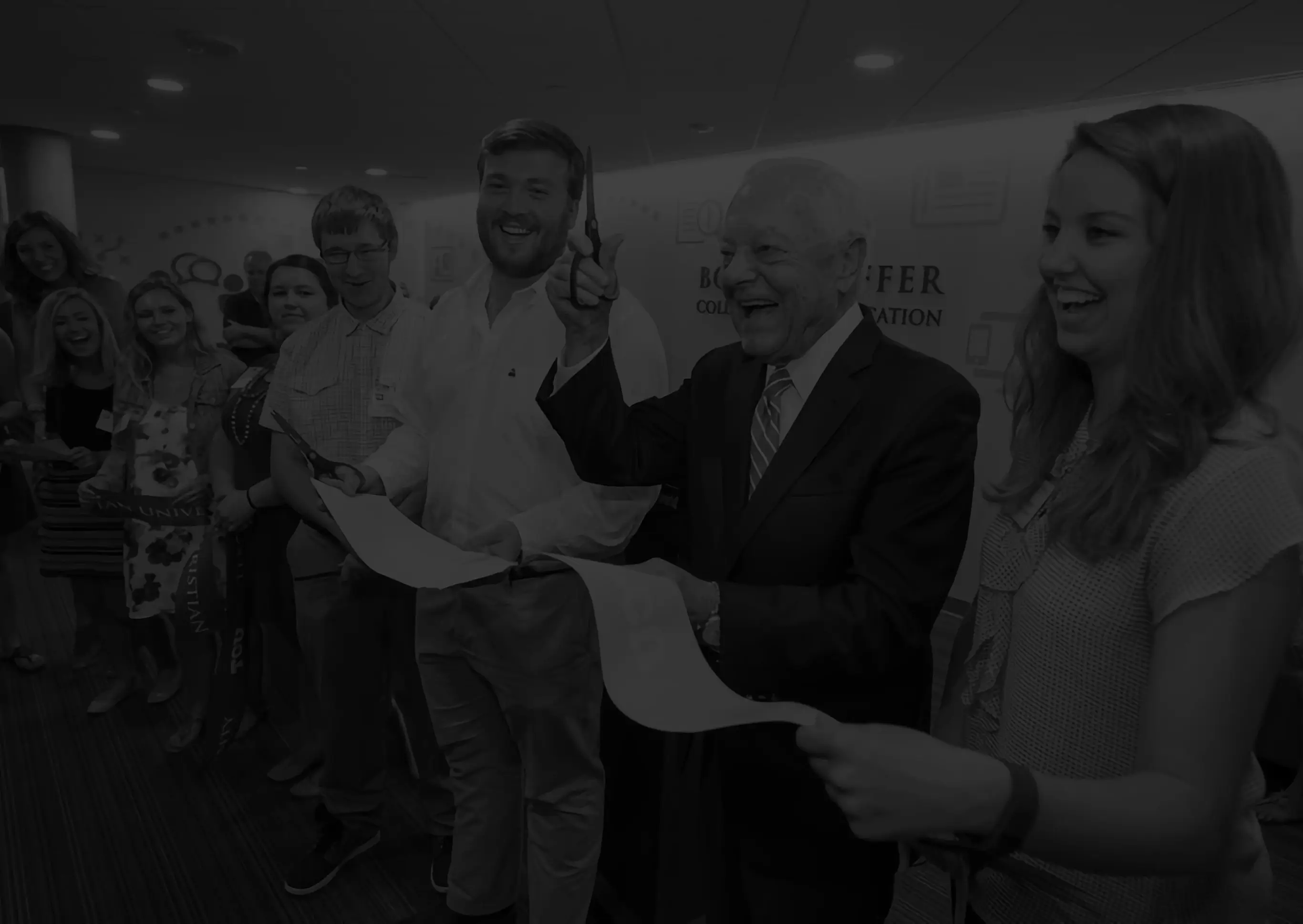
2013
The Bob Schieffer College of Communication Officially Named
In November 2013, CBS News reported that “Texas Christian University has bestowed another laurel upon its star journalism alumnus,” as the university’s trustees voted to re-name the College of Communication the Bob Schieffer College of Communication.
Schieffer, who was then CBS chief Washington correspondent and moderator of “Face the Nation,” told TCU360.com reporters,
“I am not just thrilled. I am honored.”
TCU officials said elevating Schieffer’s name to the college offered the kind of prestige enjoyed by other named schools and colleges at TCU, and by other communication colleges, such as the Walter Cronkite School of Journalism and Mass Communication at Arizona State University.
2014
Strategic Communication emerges as a freestanding program
On June 1, 2014, the strategic communication program parted ways with the journalism program, leaving its status as a sequence or major inside the journalism program and becoming its own academic unit. Dr. Jacque Lambiase was the first chair of the new department, which at its launch already served 400 students.
2015
The Bob Schieffer College of Communication names
its first woman dean
“I came to TCU because it’s a mission-driven private university preparing graduates to become morally responsible leaders who will serve the common good and because it insists that faculty be both teachers and scholars.”
–DR. KRISTIE BUNTON
In 2015, Dr. Kristie Bunton was named dean of the Bob Schieffer College of Communication. A media ethics scholar, Bunton was founding chair of the Department of Communication and Journalism and associate dean of the College of Arts and Sciences at the University of St. Thomas, Minnesota’s largest private university.
Bunton said the college should “become indispensable inside TCU and nationally prominent outside it.” That would require attention to rapid change in communication practices, she said. “We have to constantly sprint with our students to stay abreast of change, but we also have to remember we’re training students to run a marathon. I don’t just want us to prepare students for their first jobs; I want us to help students learn how to learn and think critically for the rest of their lives. So teaching them to be good critical thinkers who are curious and persistent is as important as teaching them the latest video editing software.”
2017–2023
Moudy South gets the remodeling treatment
A series of summer remodeling projects aligned the Moudy South building with the way faculty and students increasingly worked. Classrooms were redesigned to include high-definition image projectors, writable walls for collaboration and flexible furniture that could accommodate every class style from lecture to team- and project-based learning. Student study and project rooms were created. A post-production green screen studio and a video editing lab were built on the first floor, while a video livestream set, ceiling-mounted remote cameras and a control setup were added to the second floor newsroom. The Roxo advertising and public relations agency moved into a new space for the agency’s student staff and its clients.
2021
Students succeed in
National Student Advertising Competition
Row 1 (from left to right): Emma Huels (Project Manager), Madison McQuary (Project Manager), Riley O’Donnell, Vivian Noyd (Lead Strategist). Row 2: Kayla Koski (Lead Researcher), Liv Shin, Margaux Nersesian, Liza Bilich. Row 3: Lauren White, Grace Pizzala, Katie Kramp, Huyen Ho, Wendy Macias (Team Advisor), Alison Parks. (Courtesy photo)
In June, a team of 13 strategic communication students won $2,500 by finishing second in the 2021 National Student Advertising Competition (NSAC). The competition is “the premier college advertising competition that provides more than 2,000 college students the real-world experience of creating a strategic advertising/marketing/media campaign for a corporate client,” according to the competition’s sponsor, the American Advertising Federation.
The TCU team began its work in November 2020, with some members working from remote off-campus locations due to the global pandemic. By the time the team made NSAC’s final round, members had created and presented a proposed $10 million advertising
campaign for a national social media client. Each round of NSAC competition – regional, semi-final and national – required the team to deliver a 20-minute presentation about their 21-page campaign book and its strategies, and to respond to 15 to 20 minutes’ worth of questions from advertising executives and representatives of the national client.
Produced with guidance from Dr. Wendy Macias, strategic communication, the team’s proposed campaign was called “the most provocative and bold” of the competition, and the team’s presentation was judged “incredible.”
2023
The Schieffer Media Insights Lab opens
Upon the recommendation of a summer 2022 faculty working group, the college created the Schieffer Media Insights Lab, which opened in fall 2023. The lab is a teaching and research space dedicated to the study and interpretation of digital and social media content. Using industry-leading social media listening platforms, faculty and students can collect, evaluate and visualize big data, as well as measure the effects of digital media content on audiences’ sentiment through facial expression analysis.
